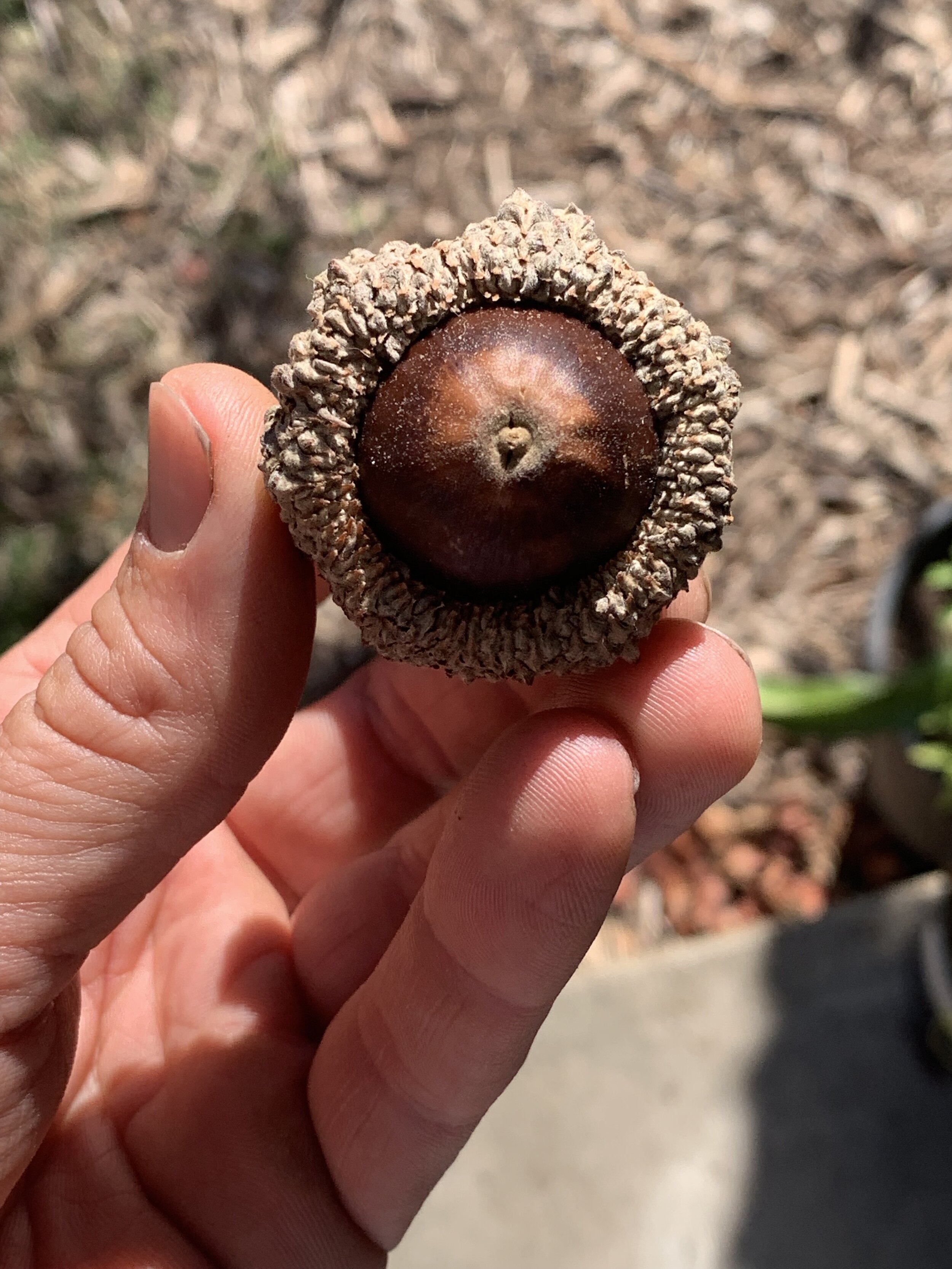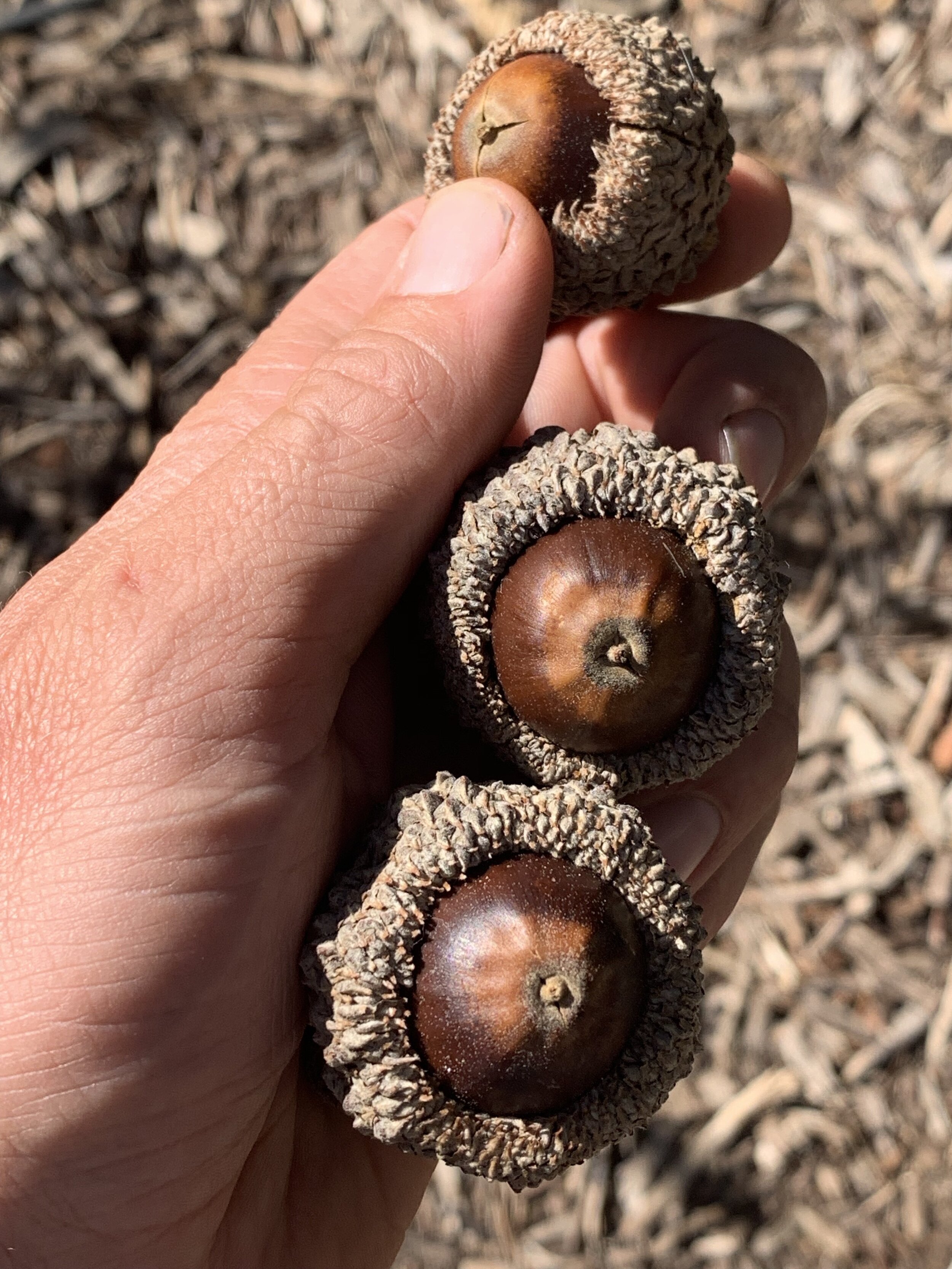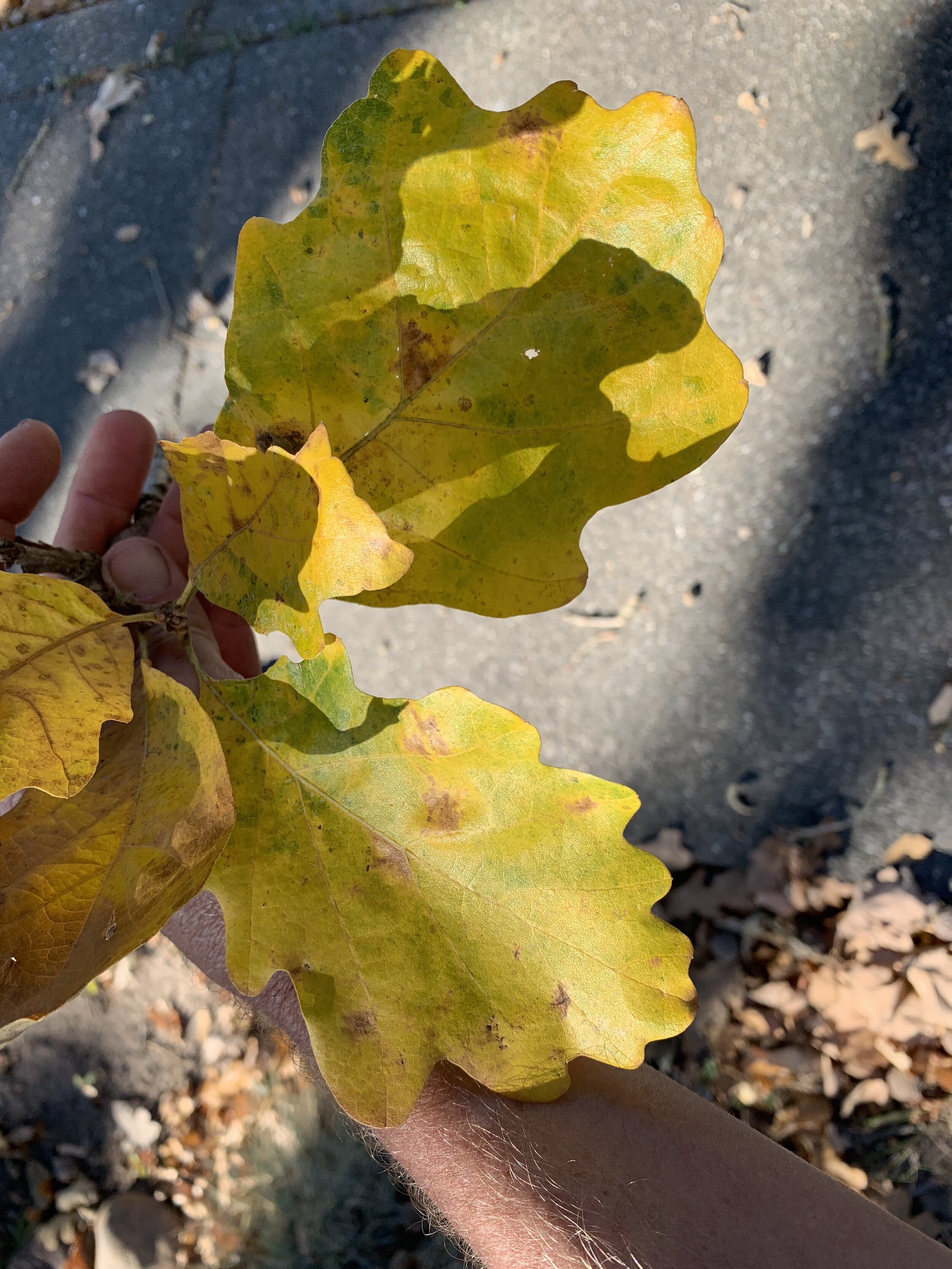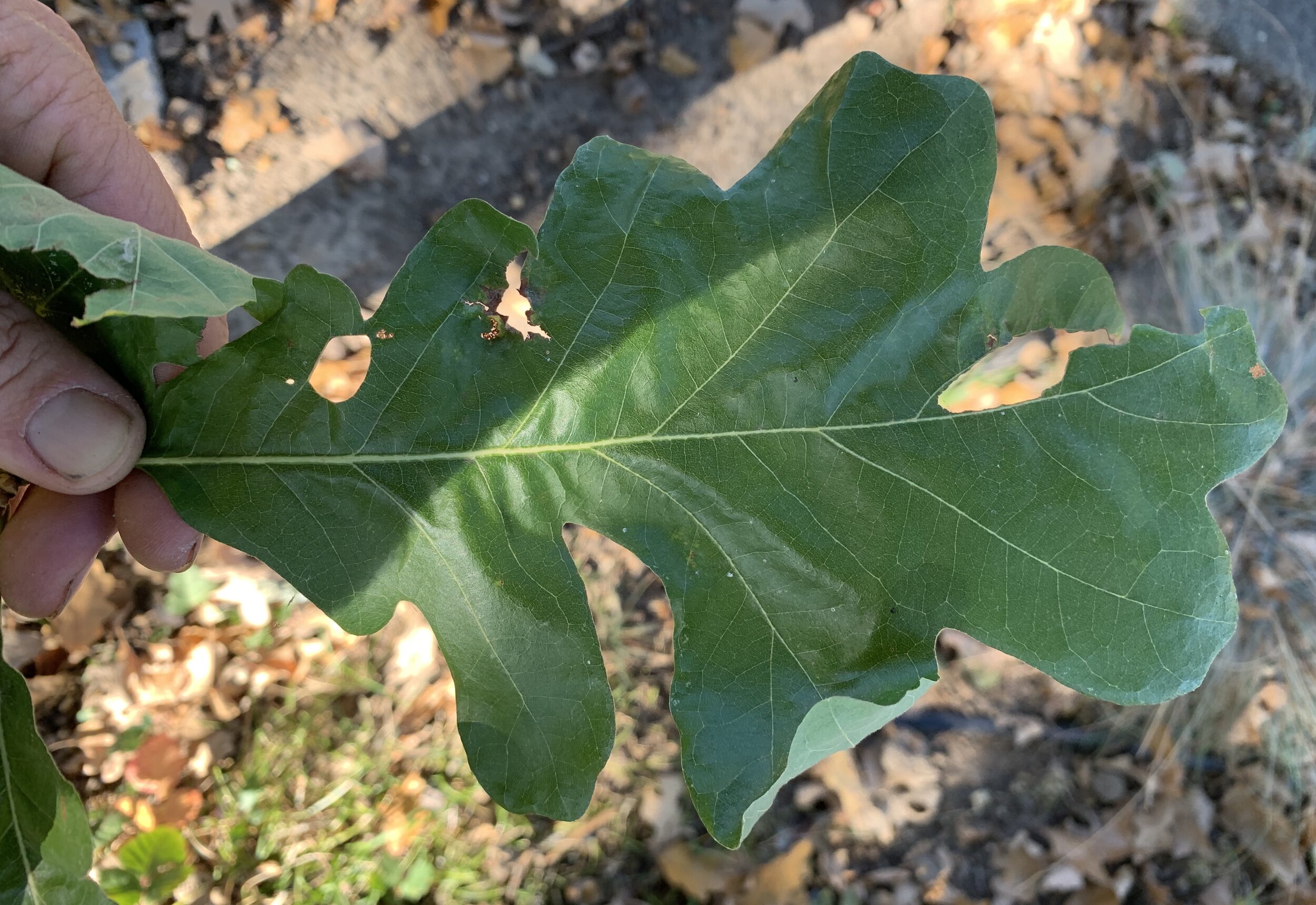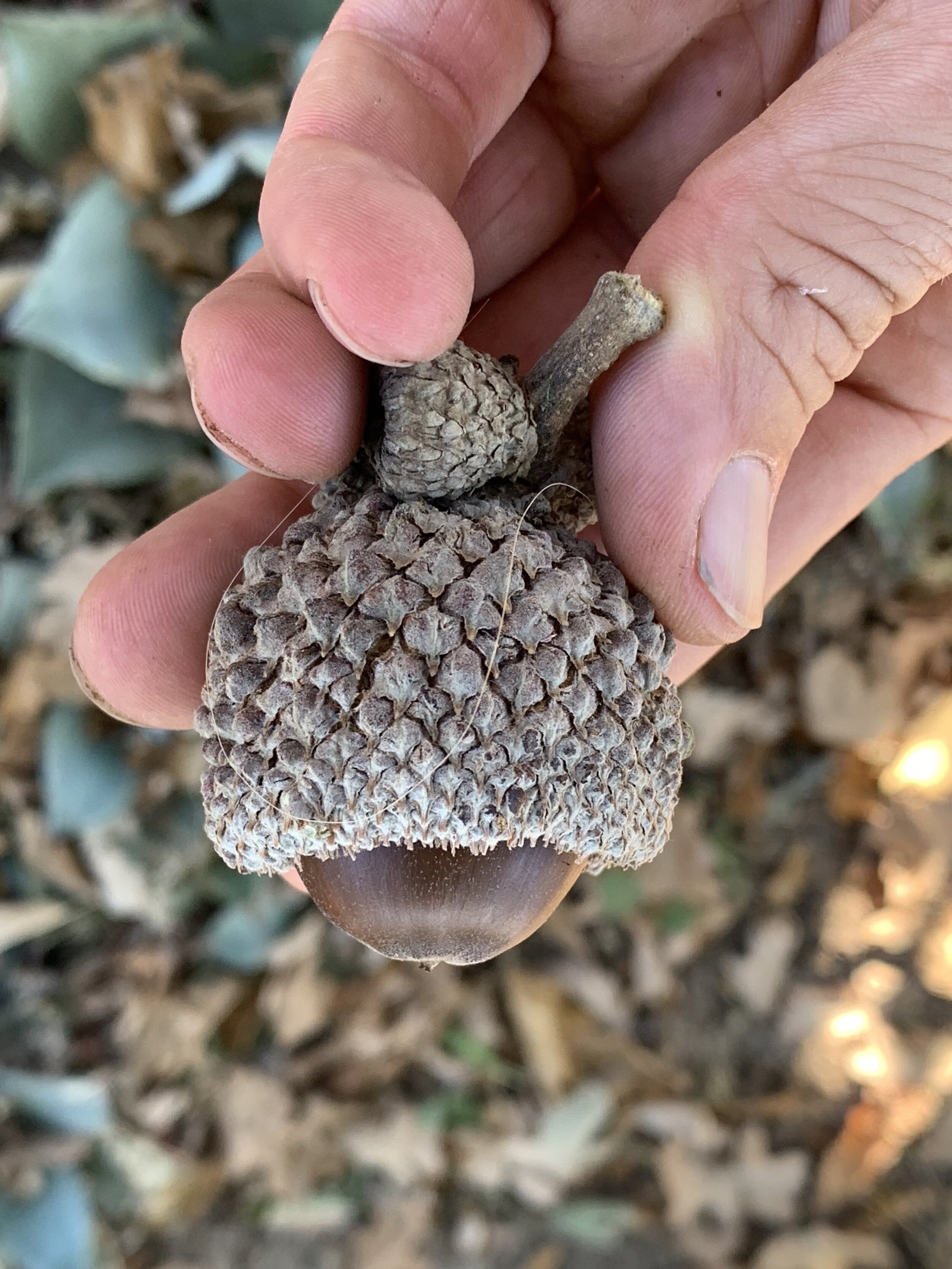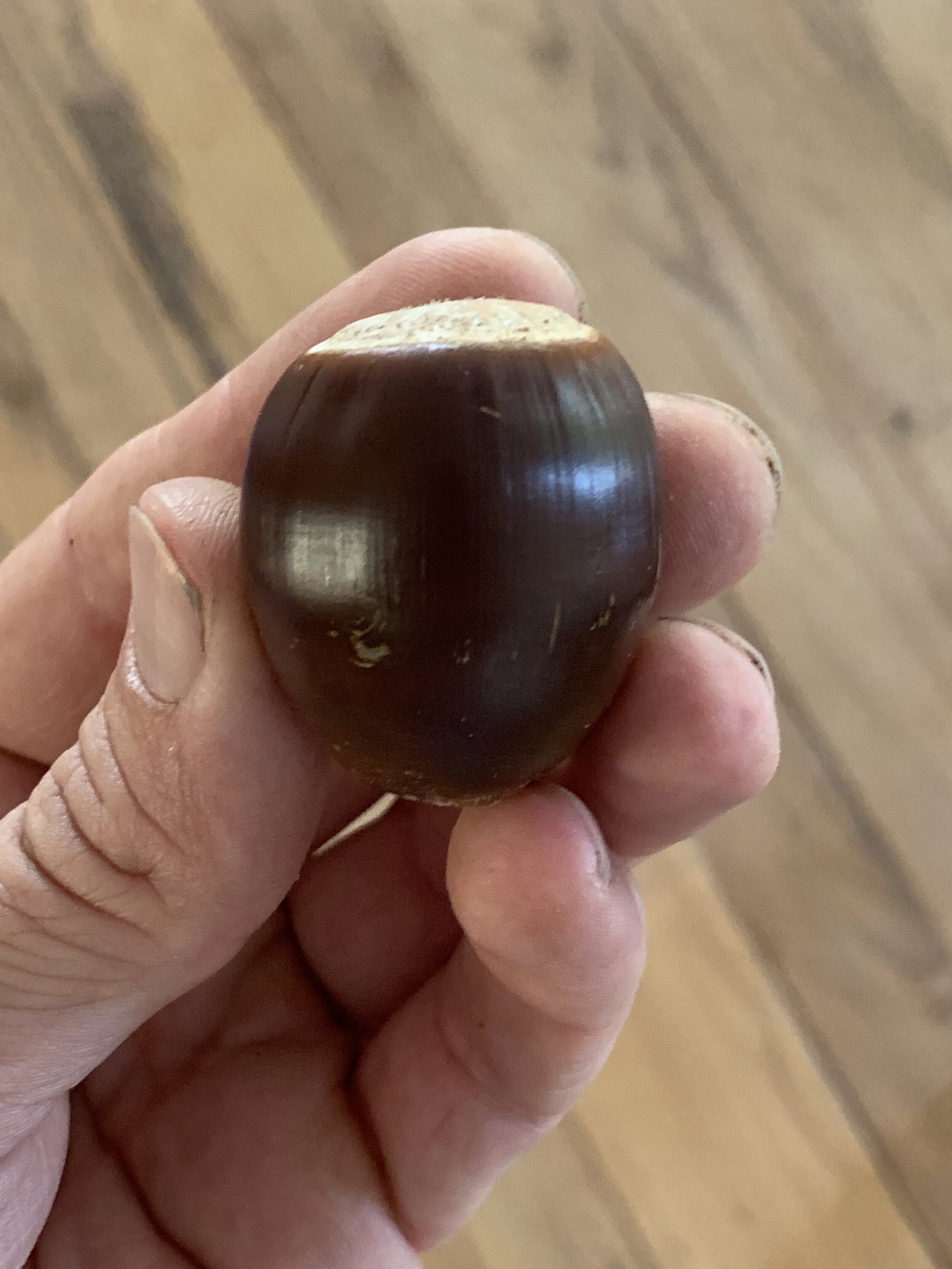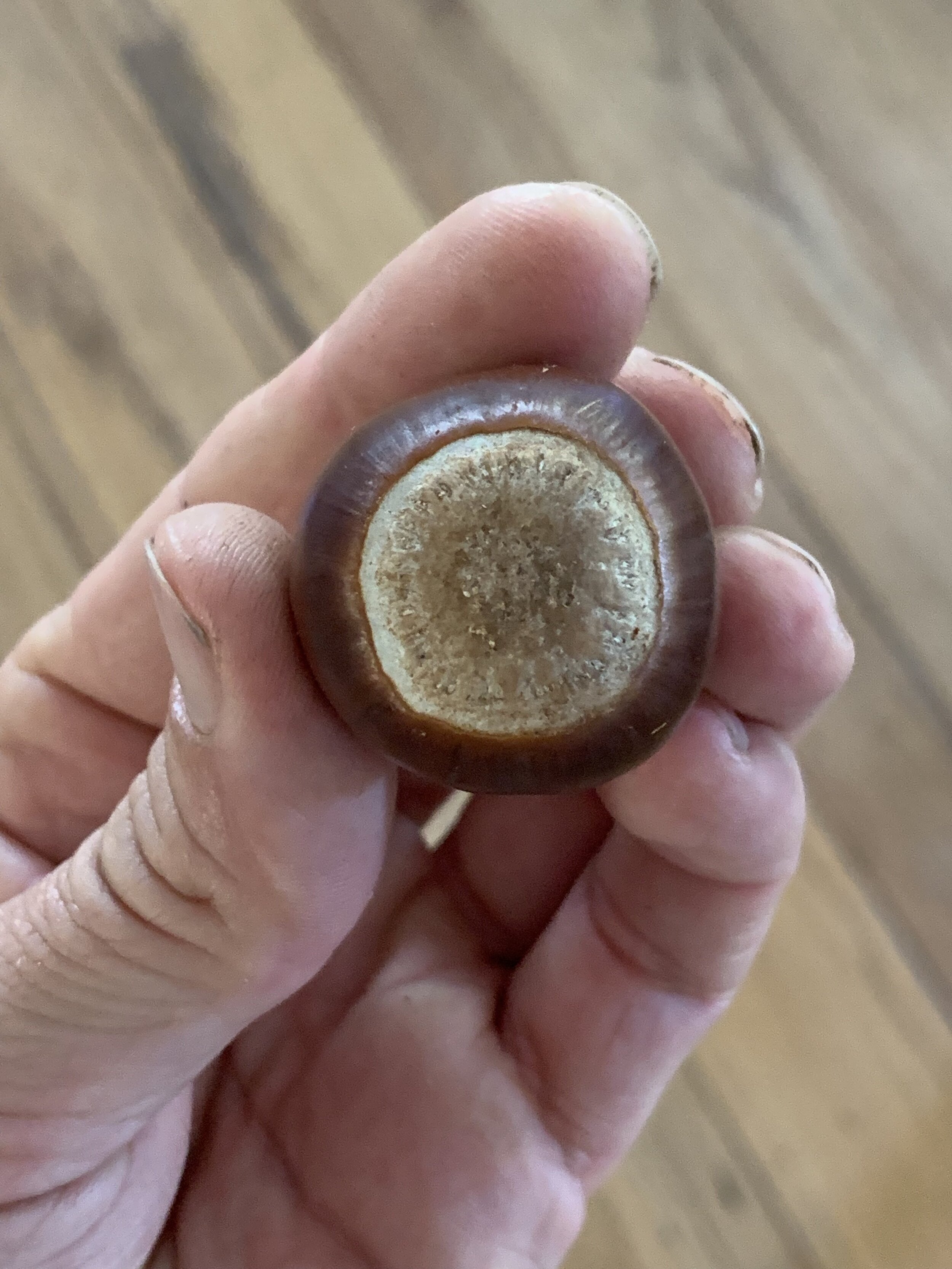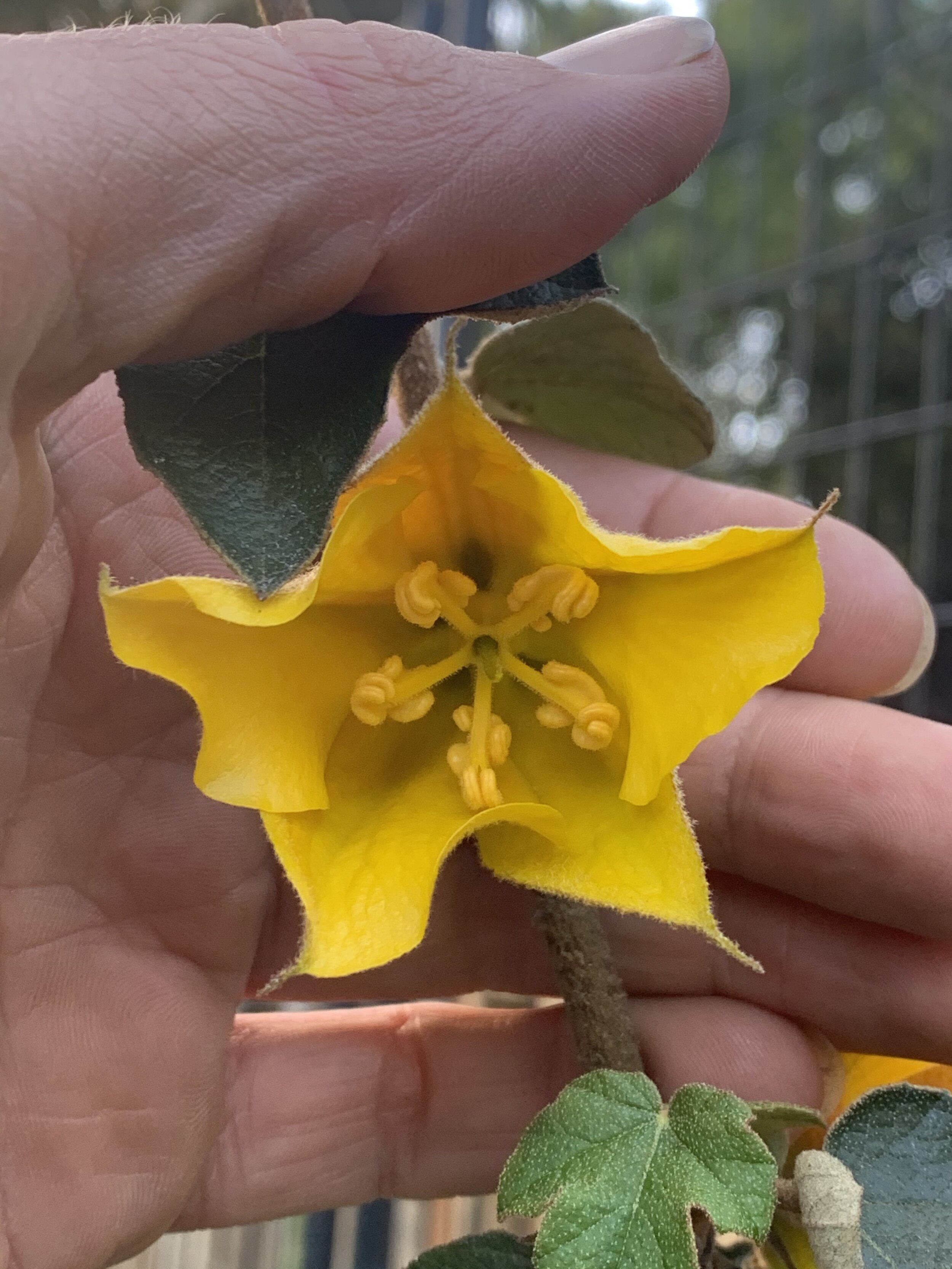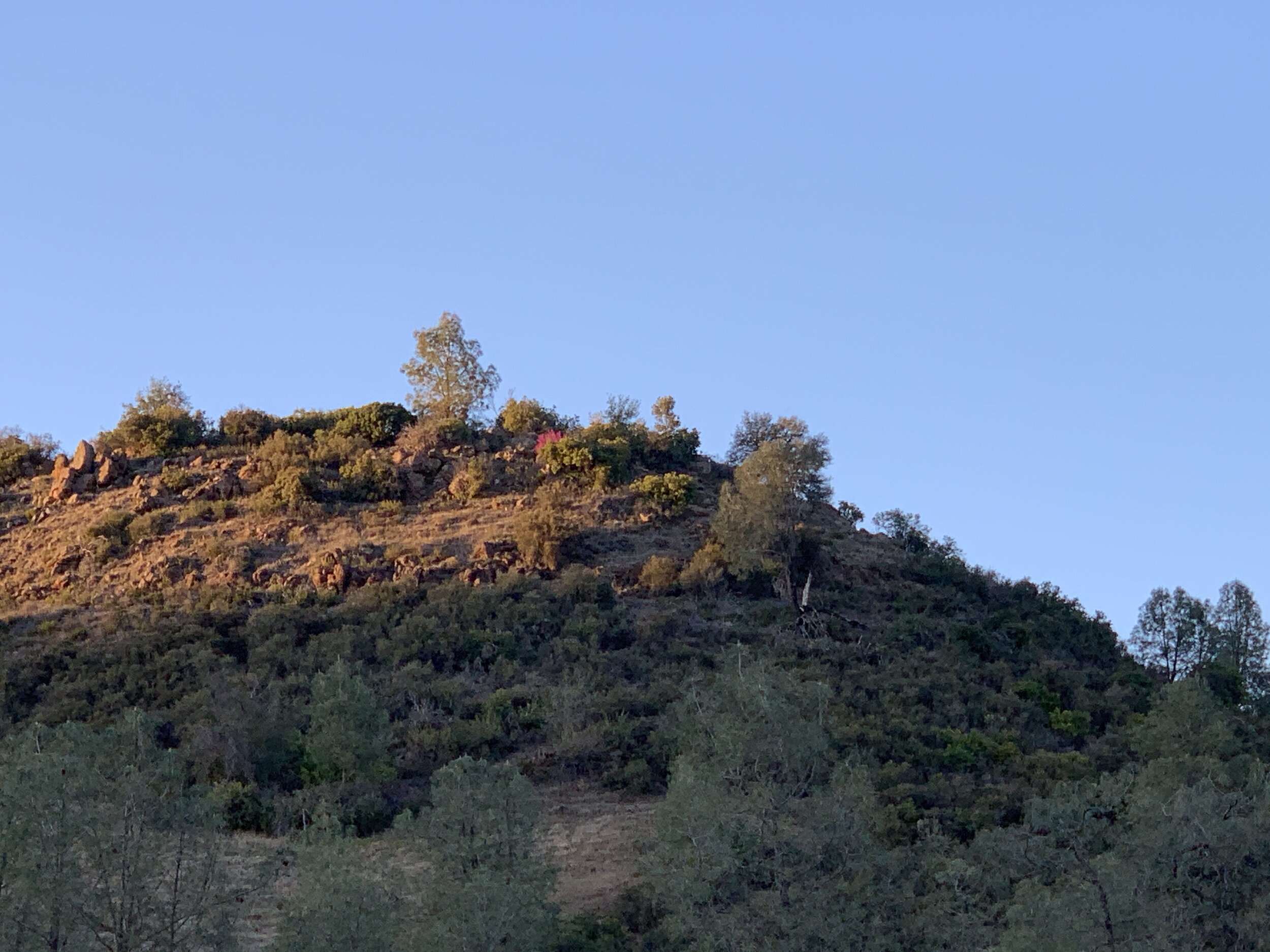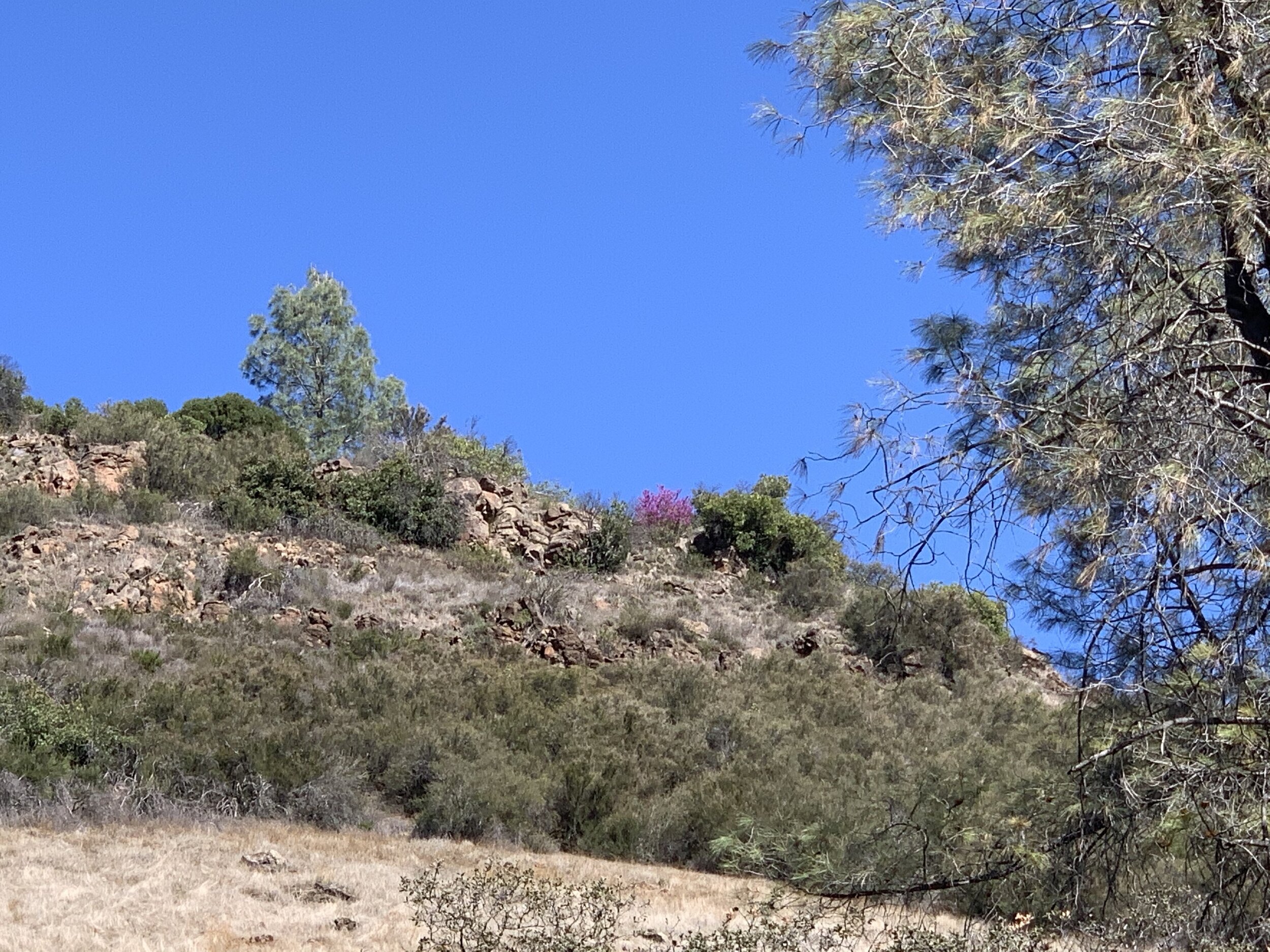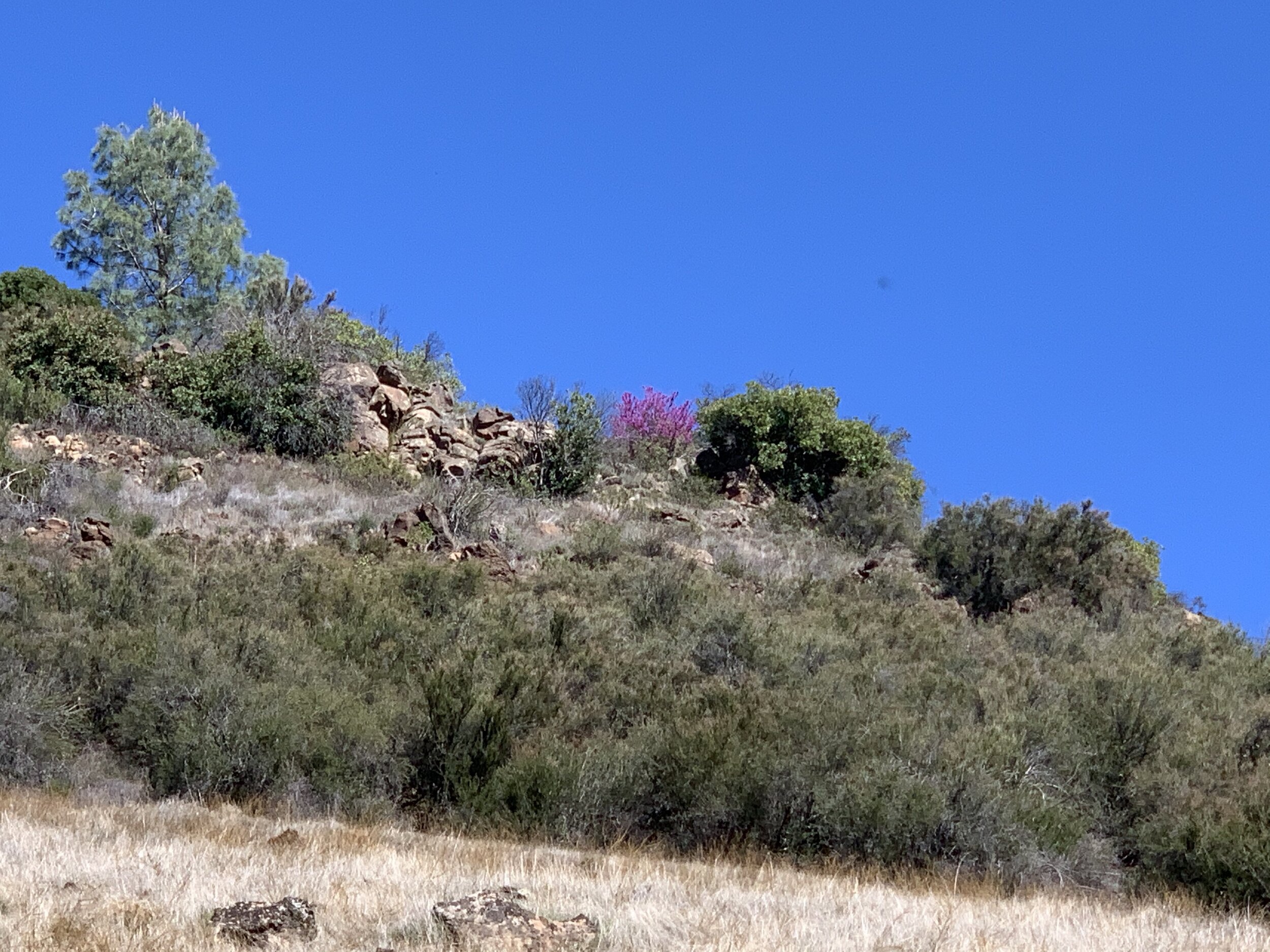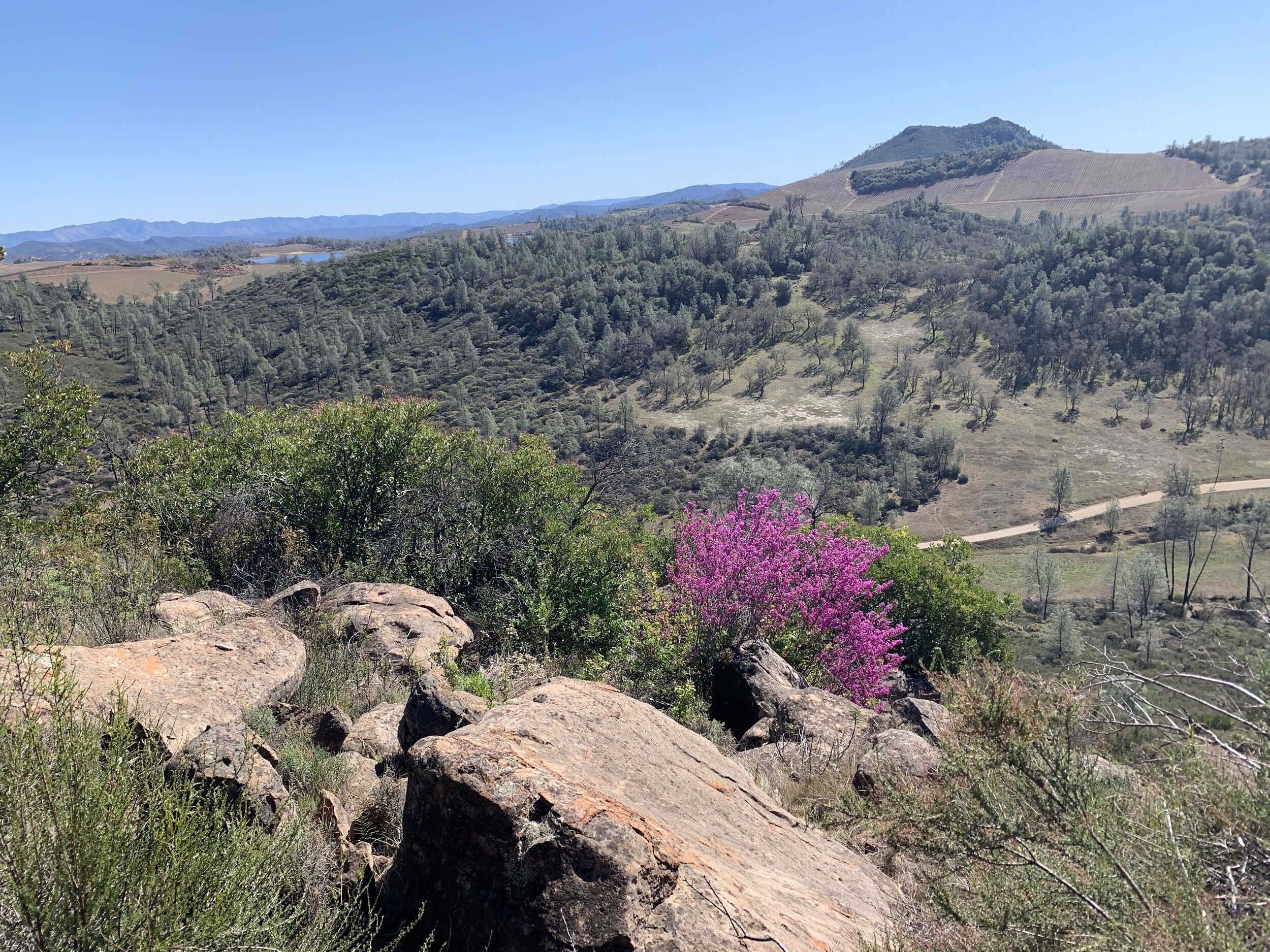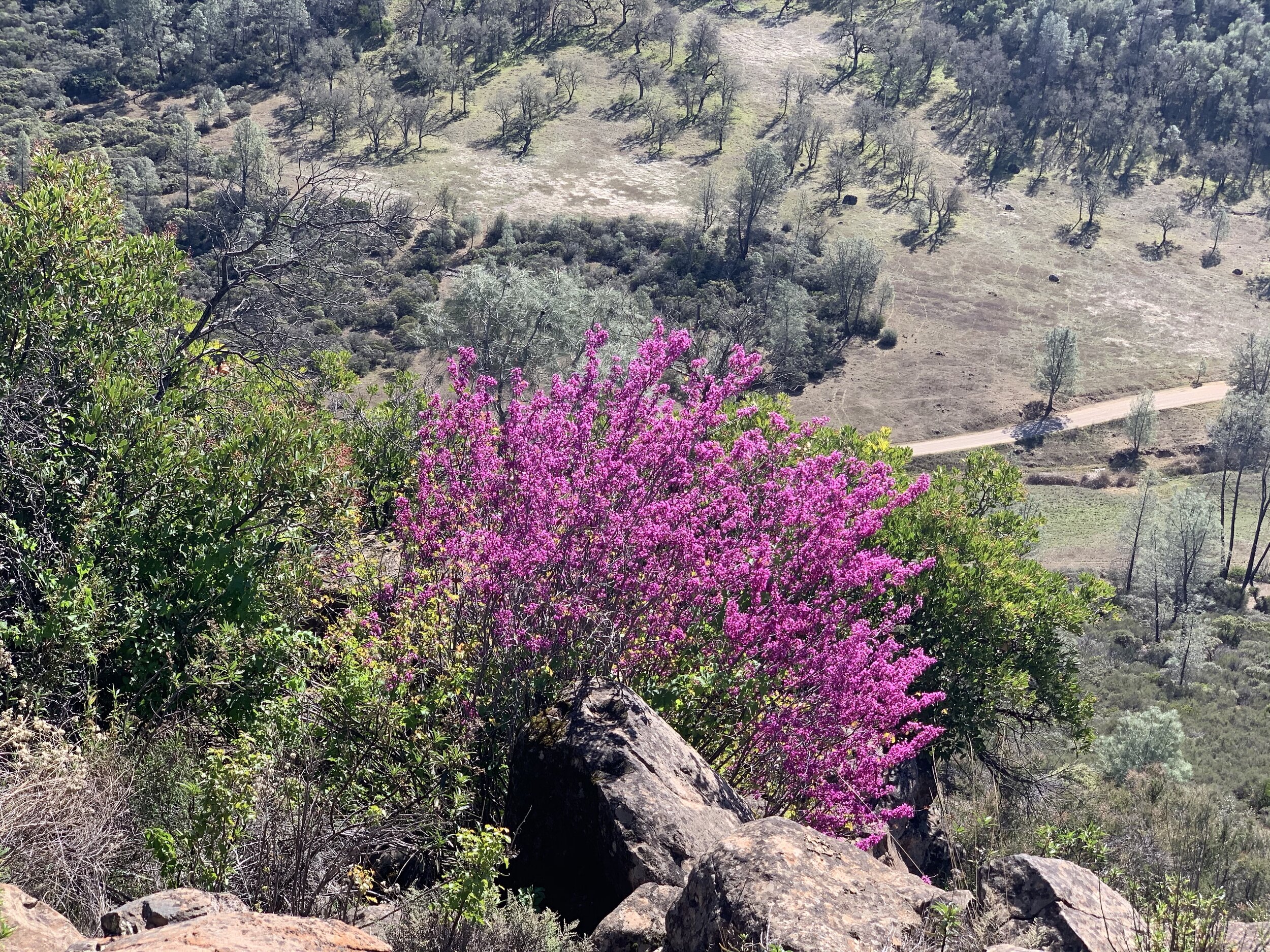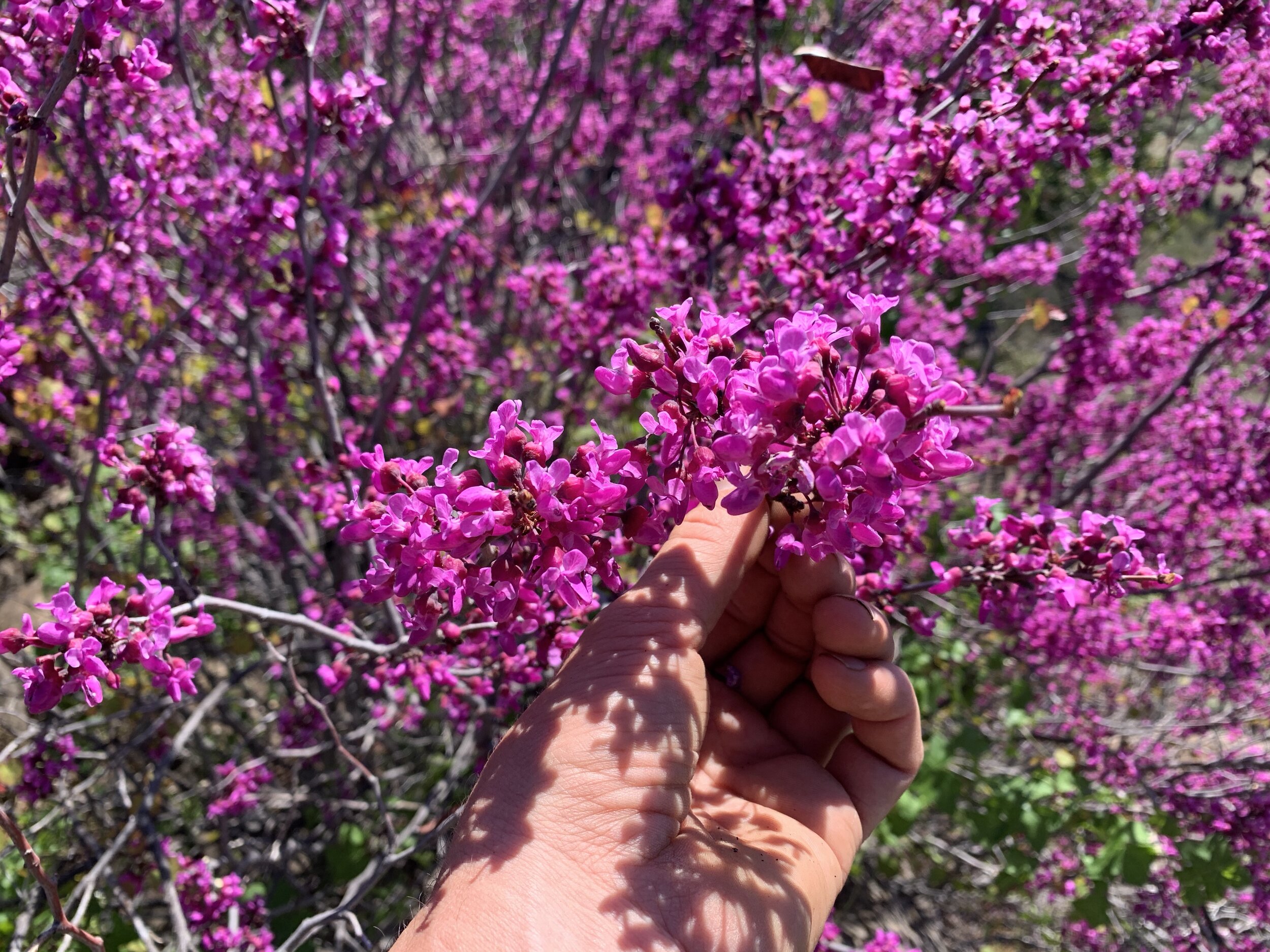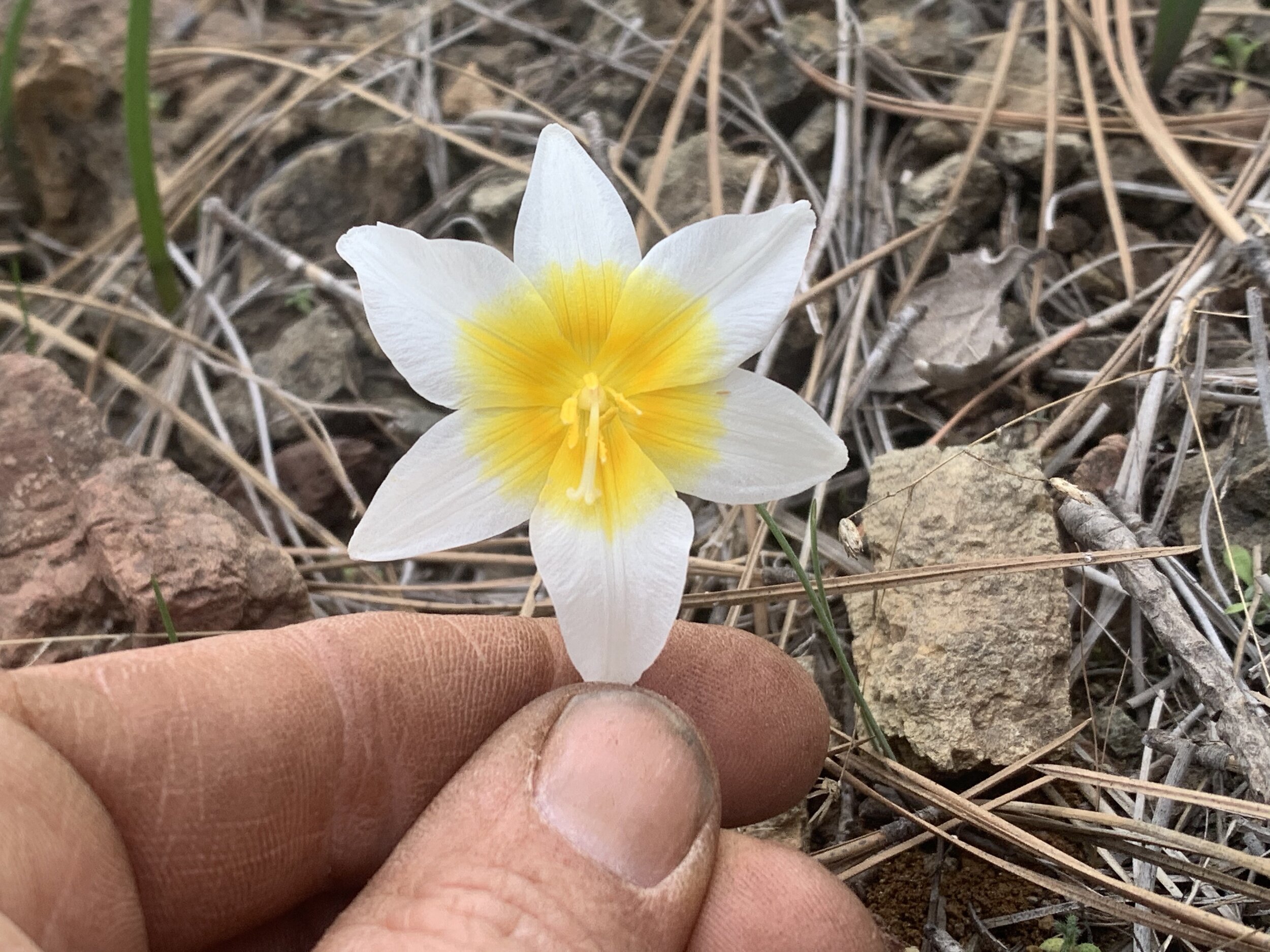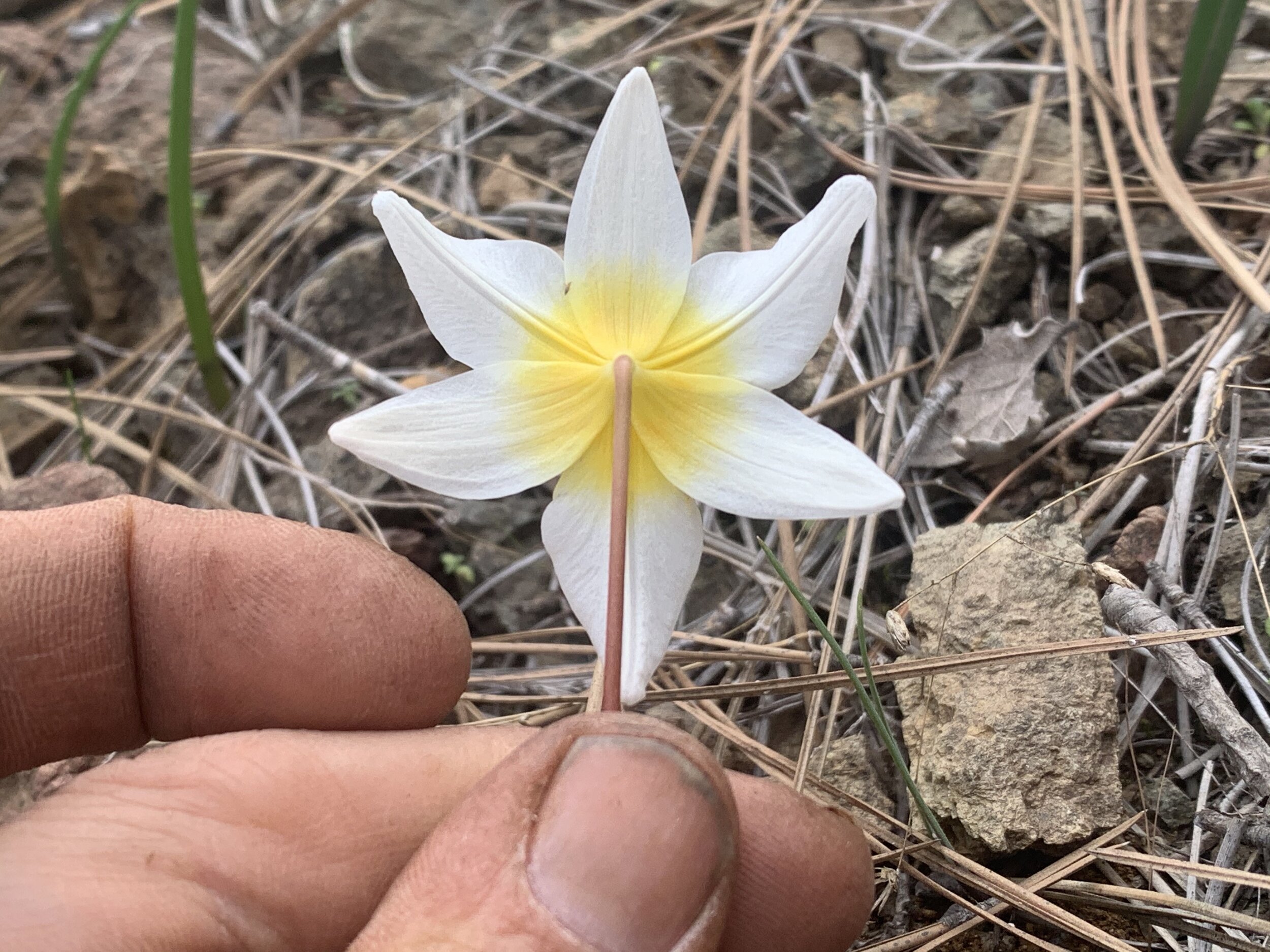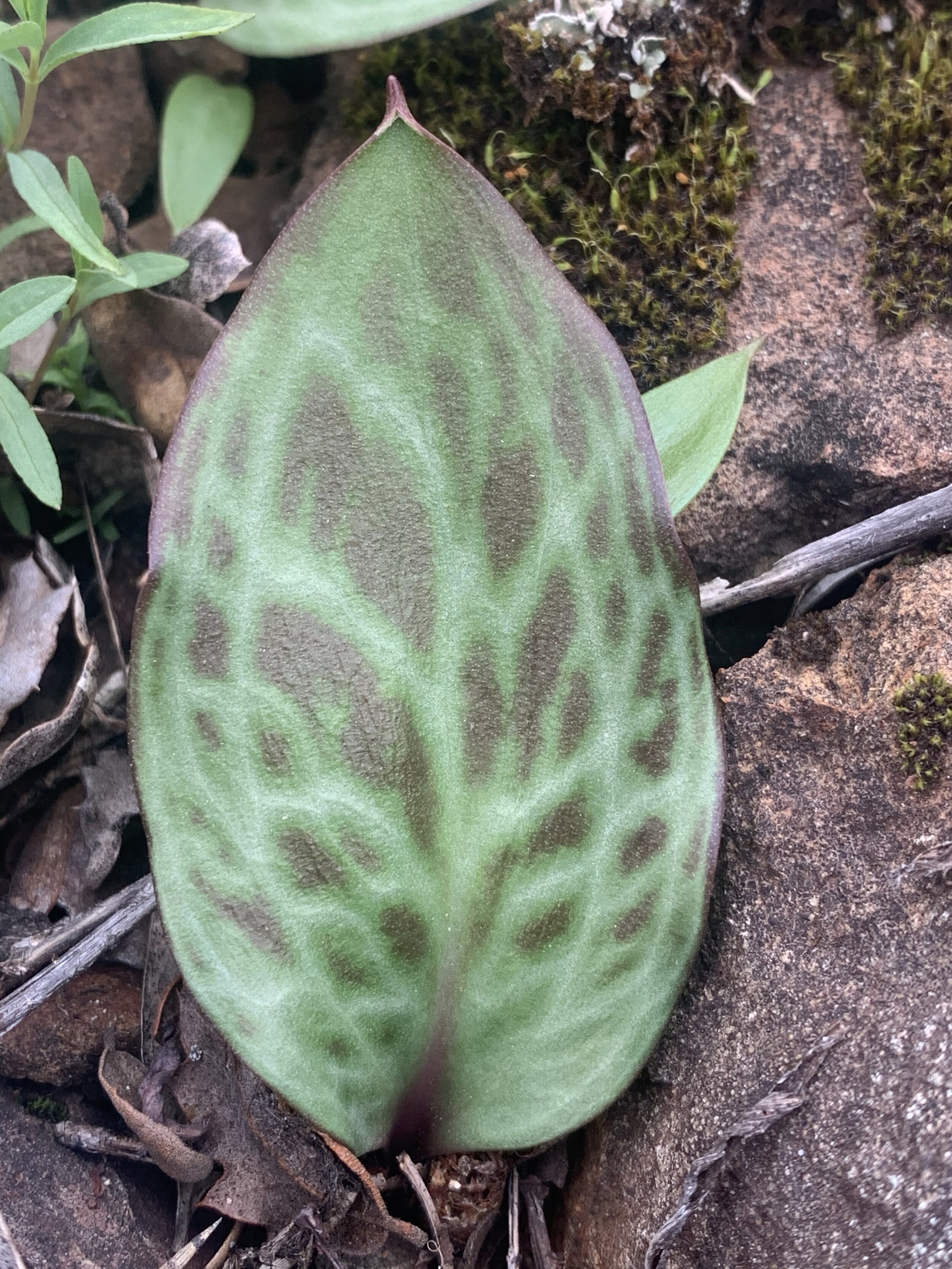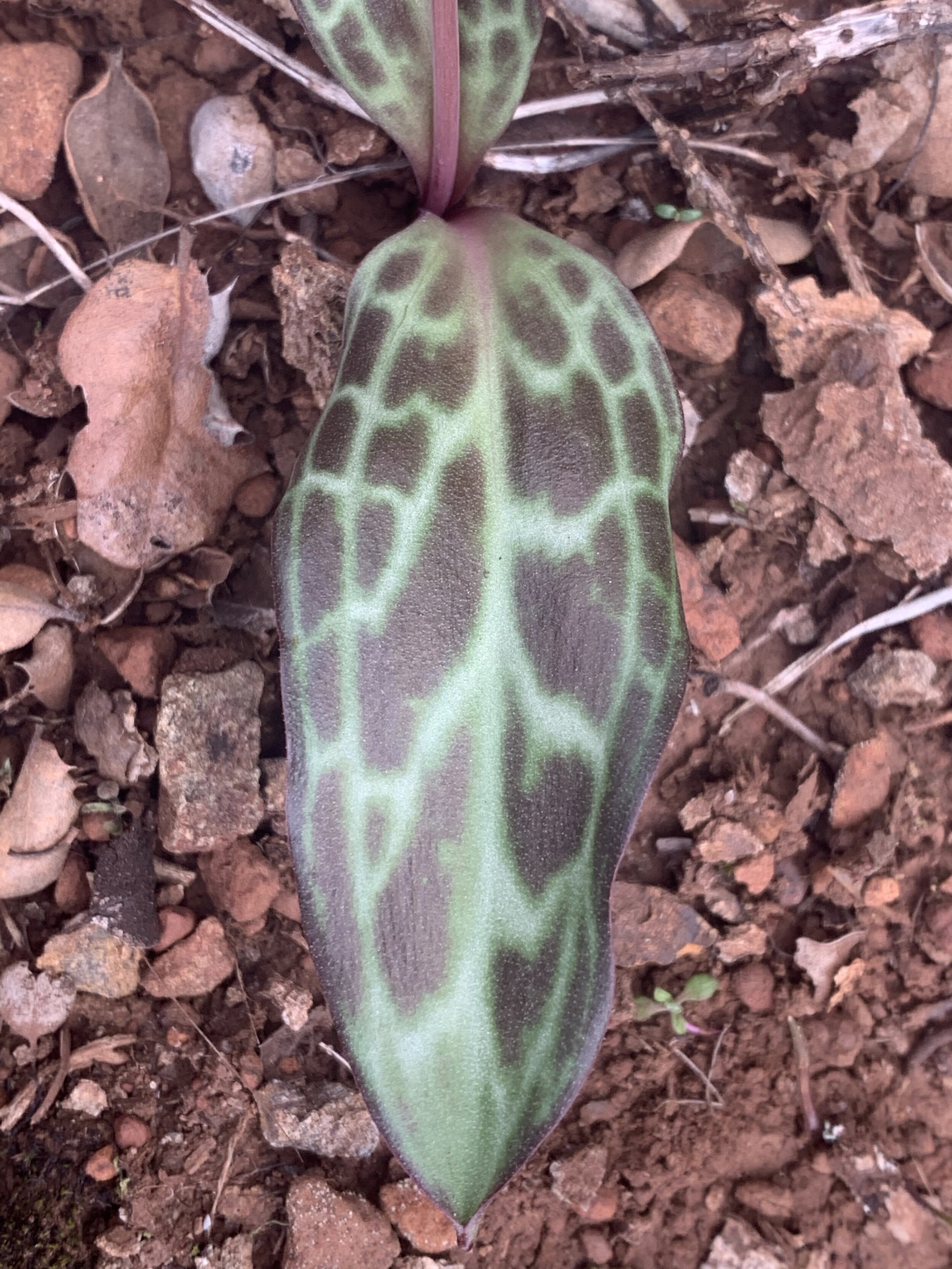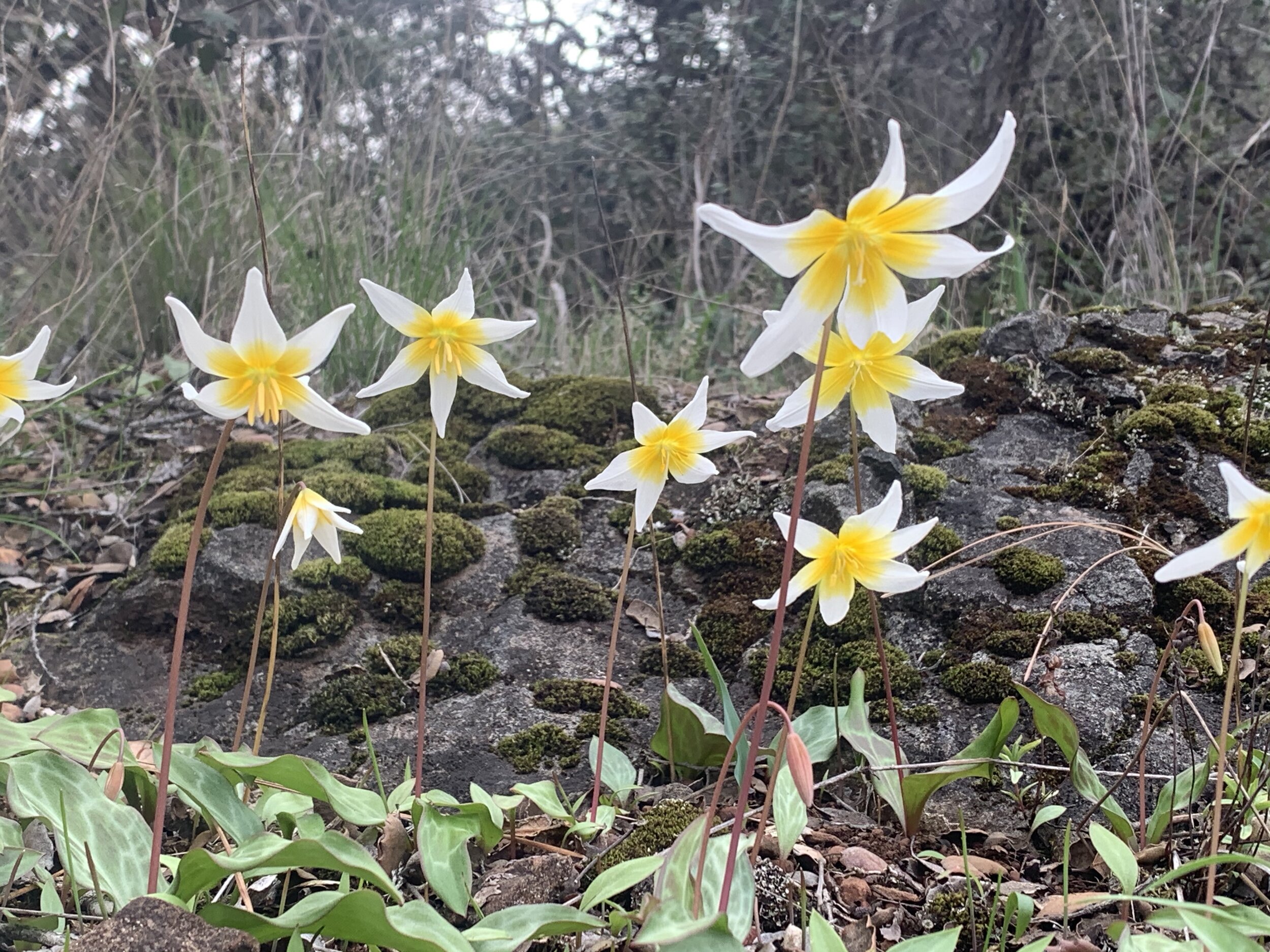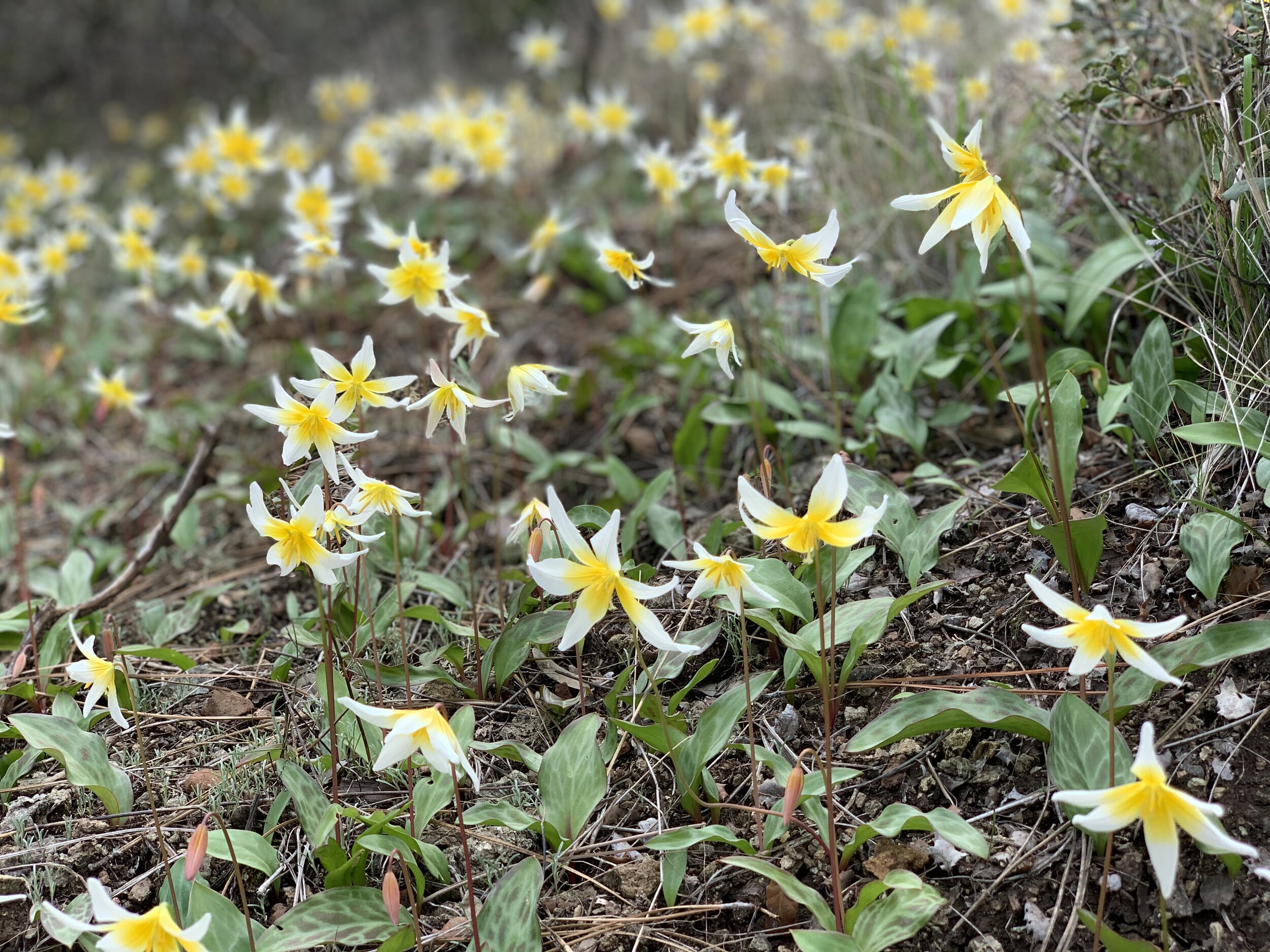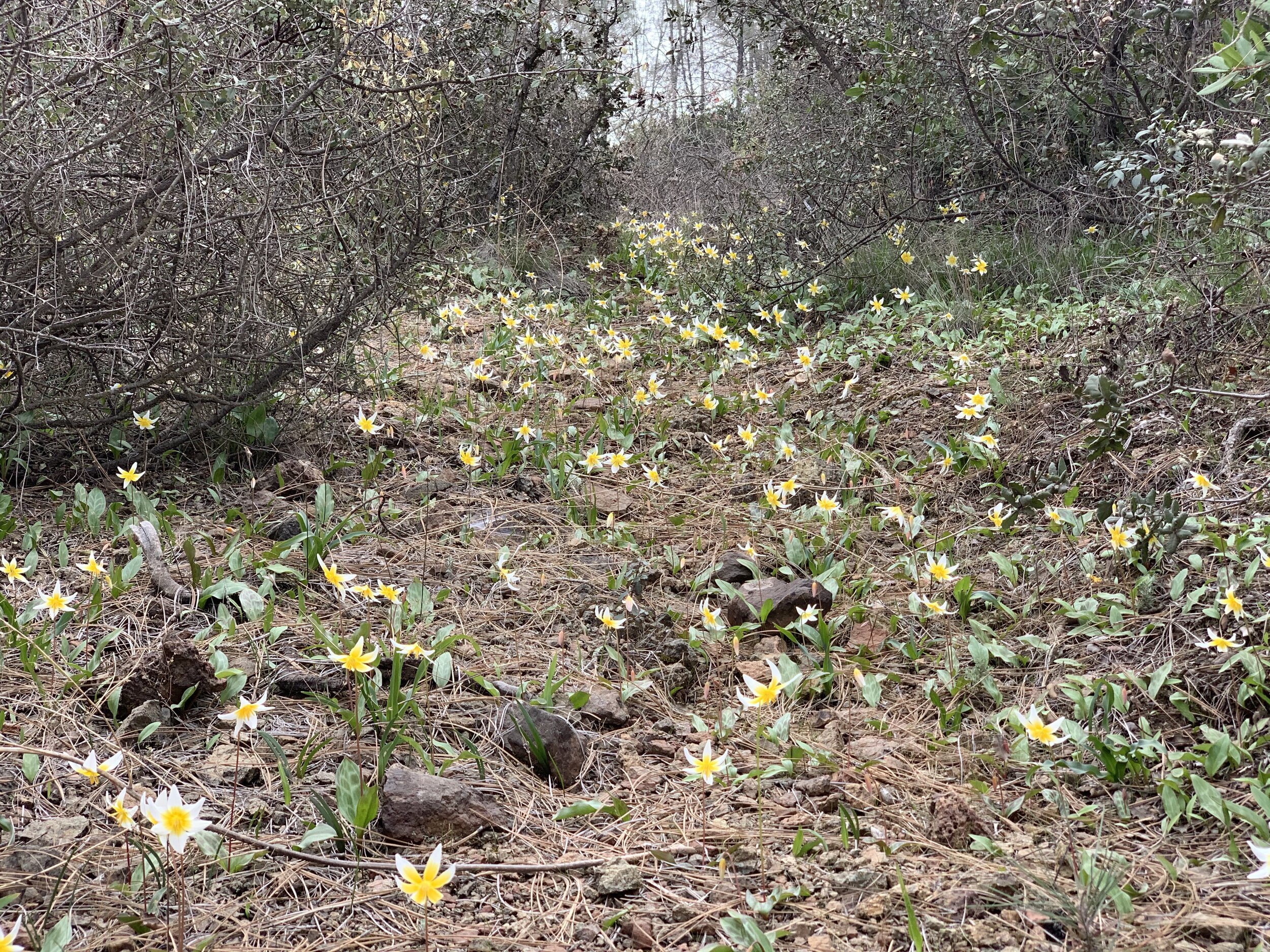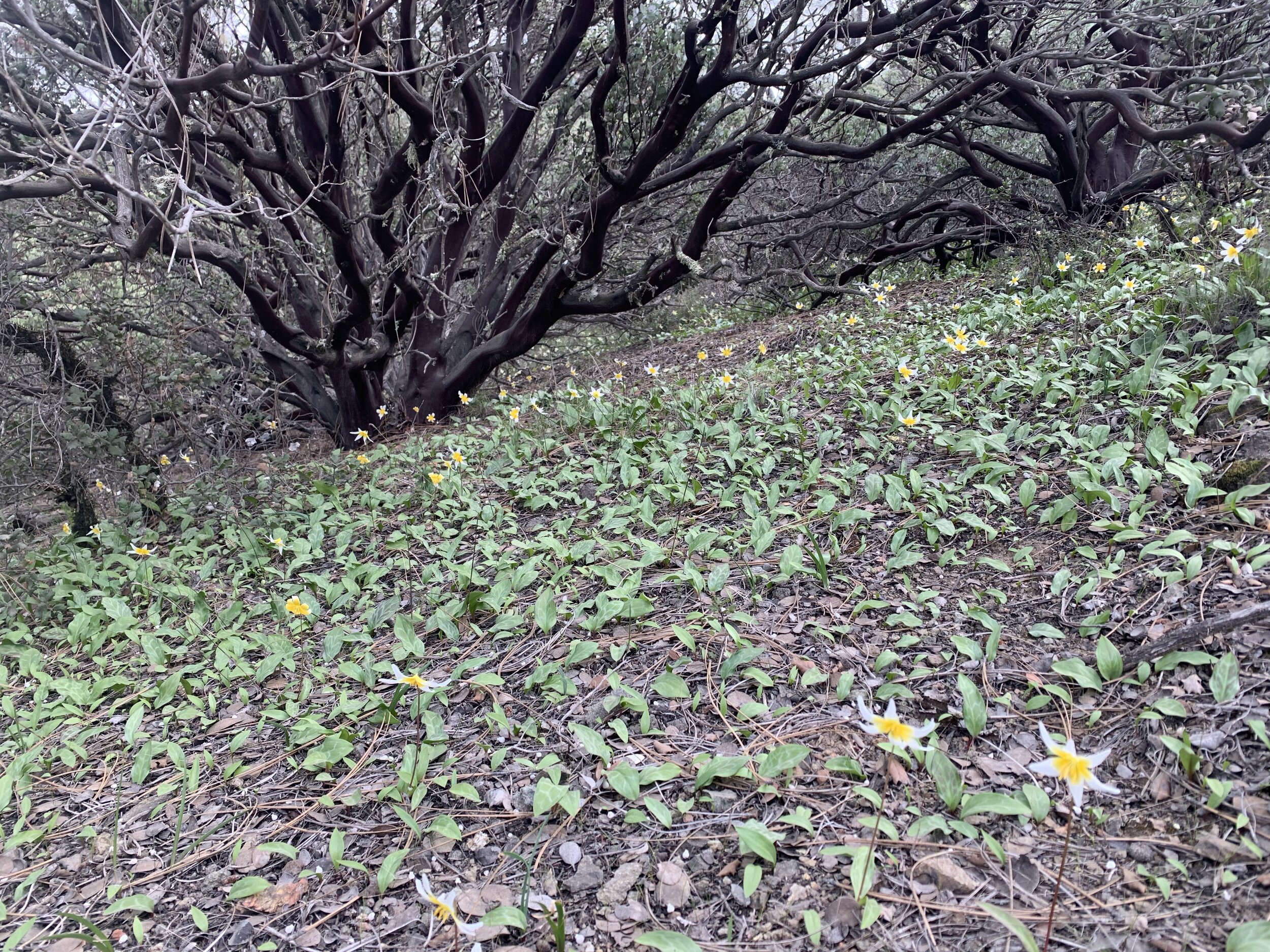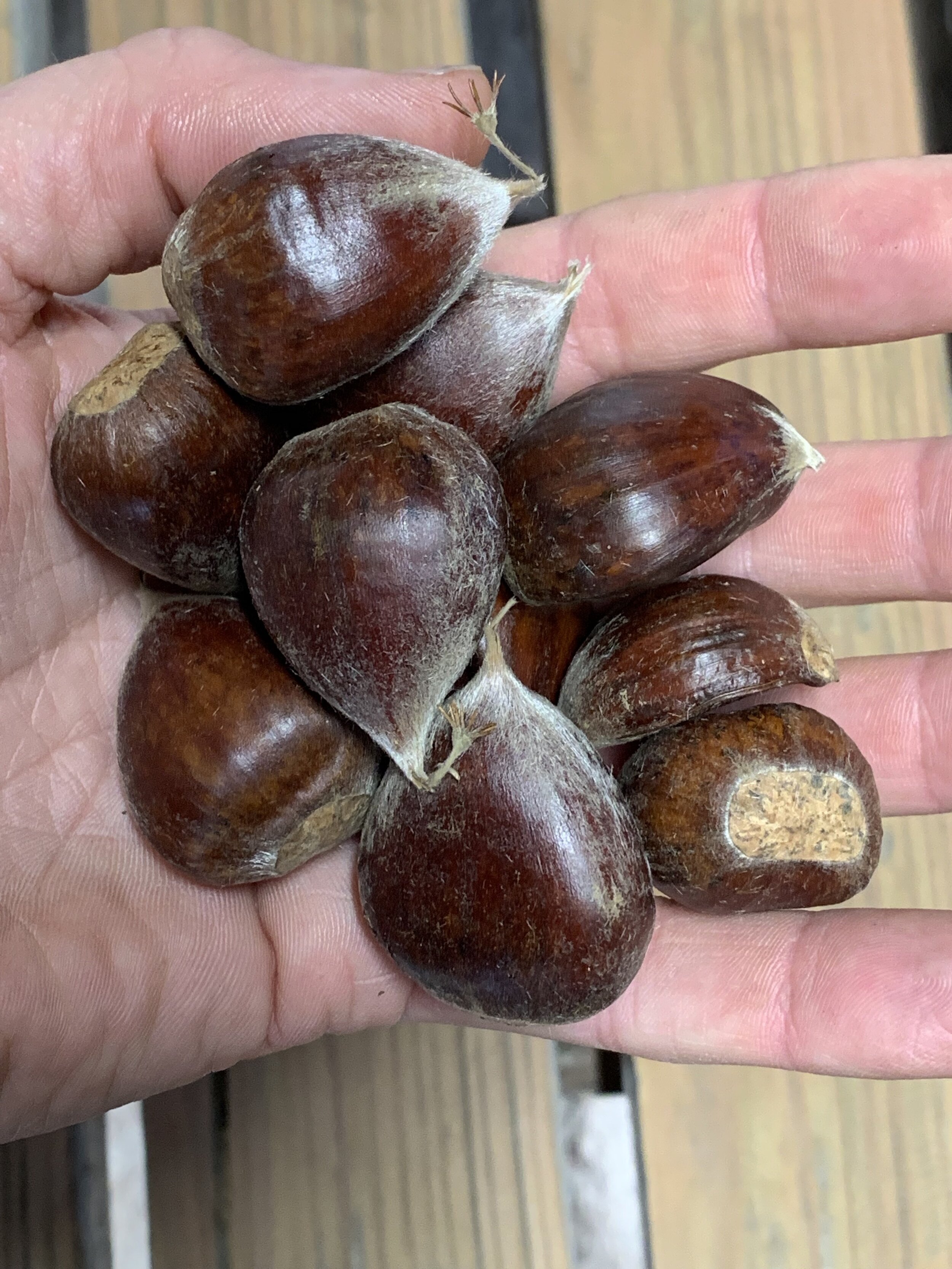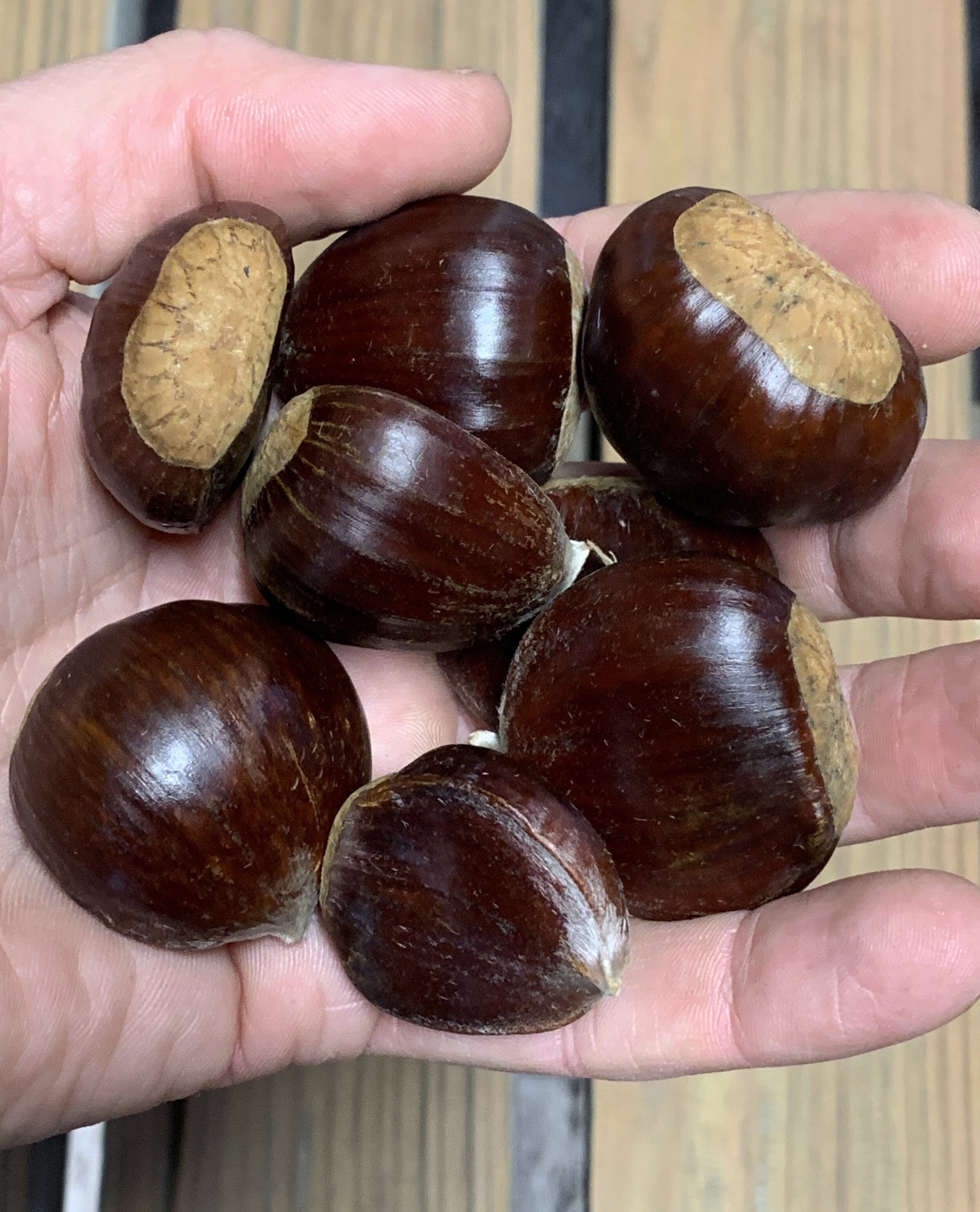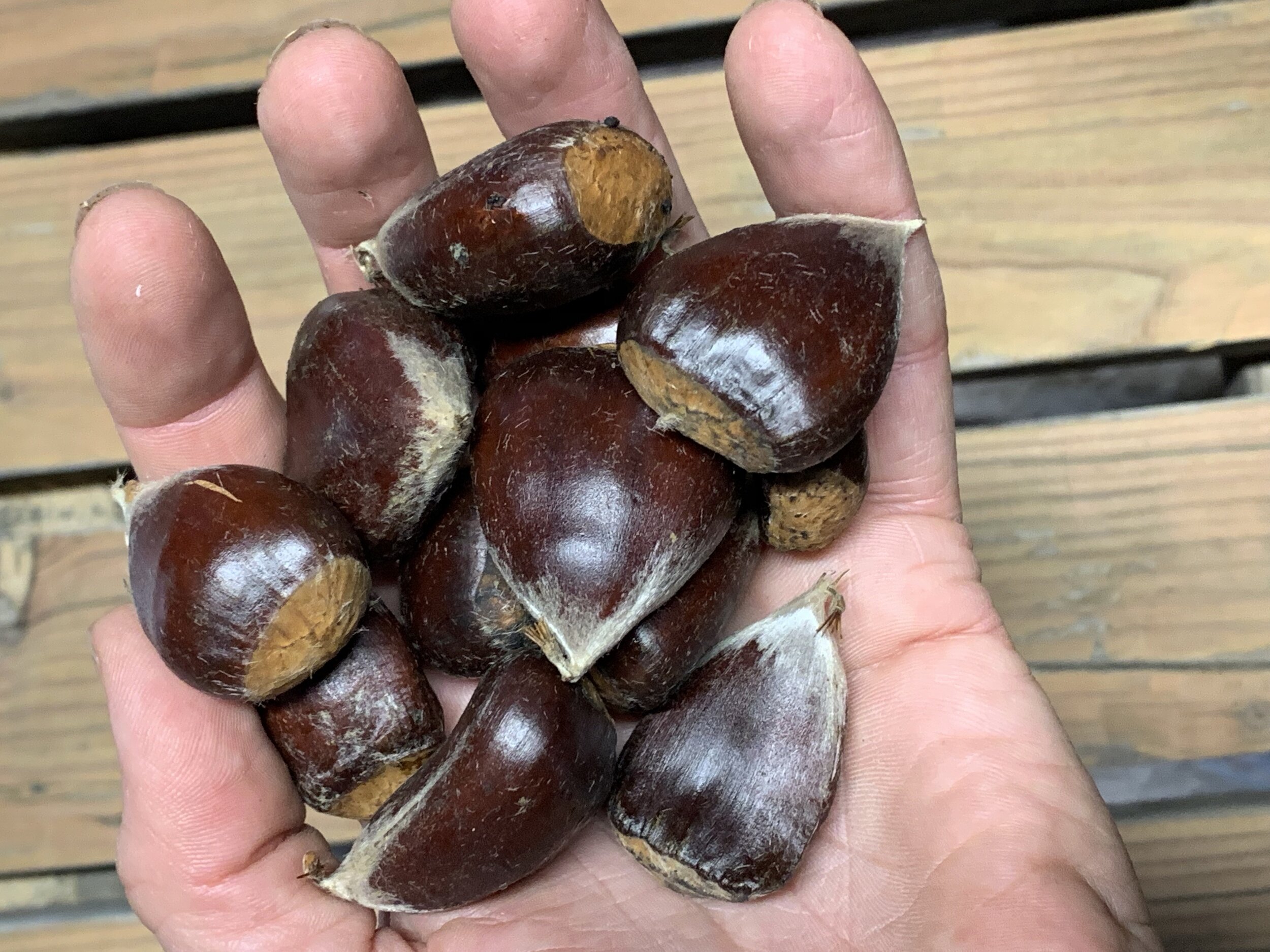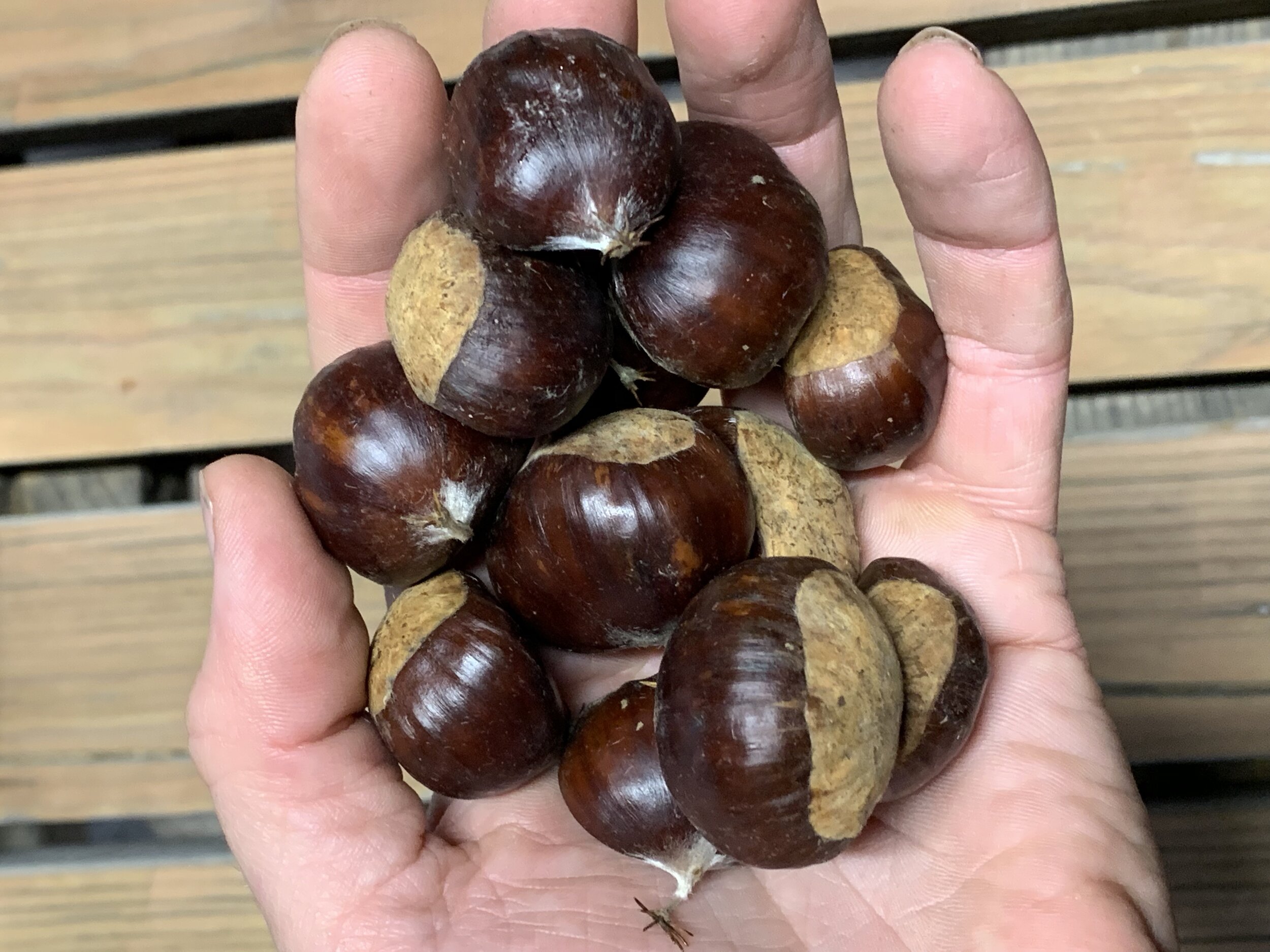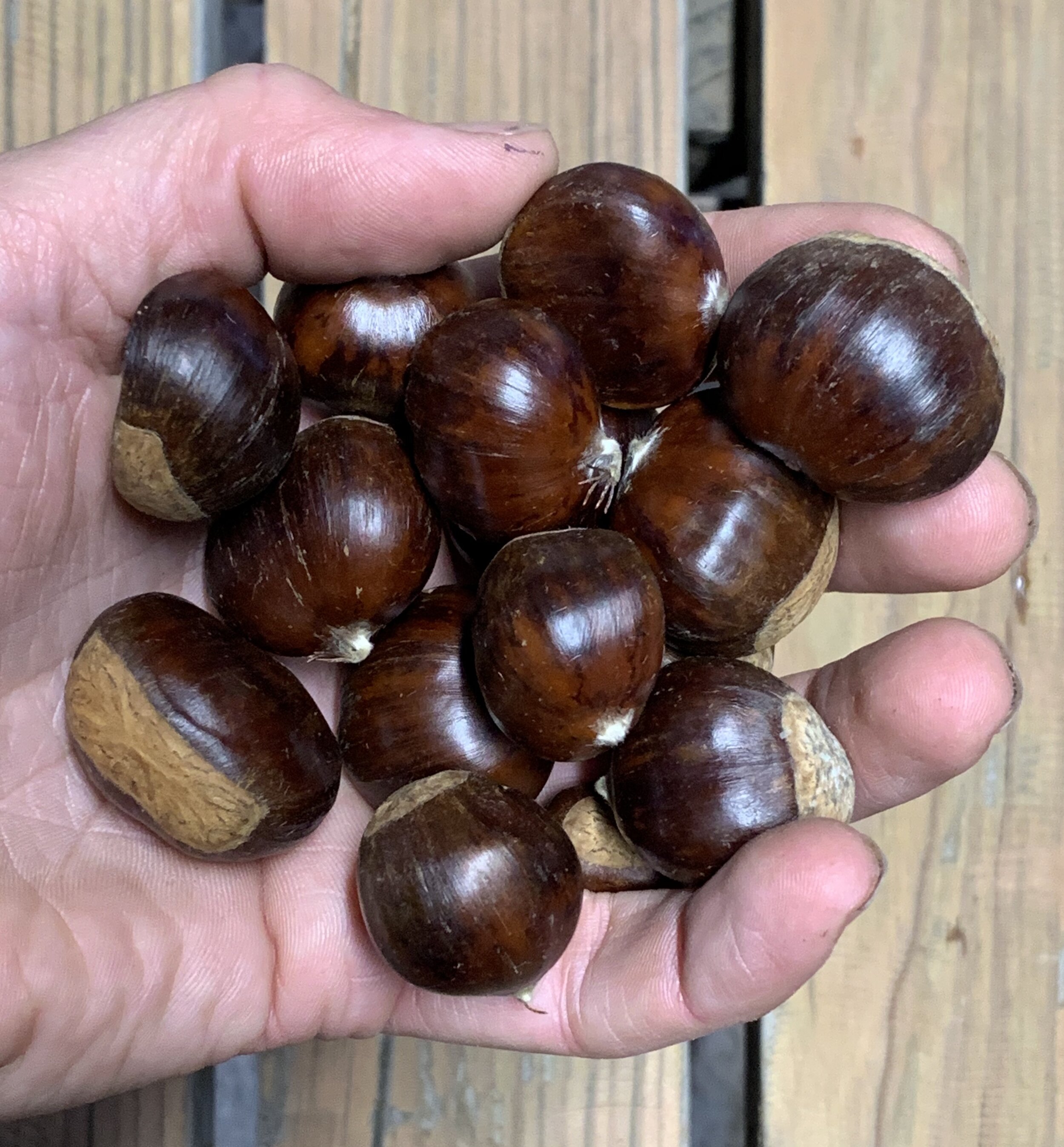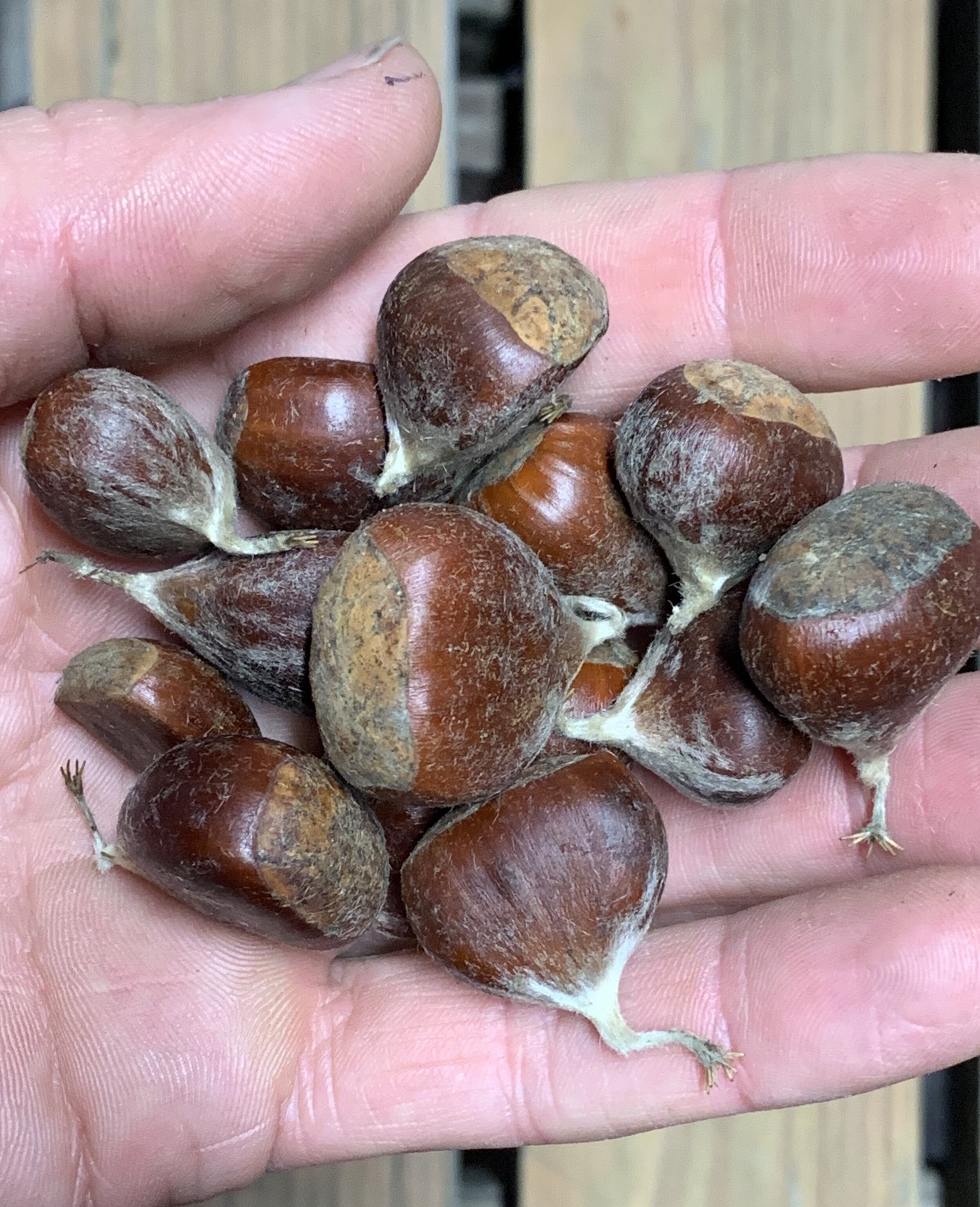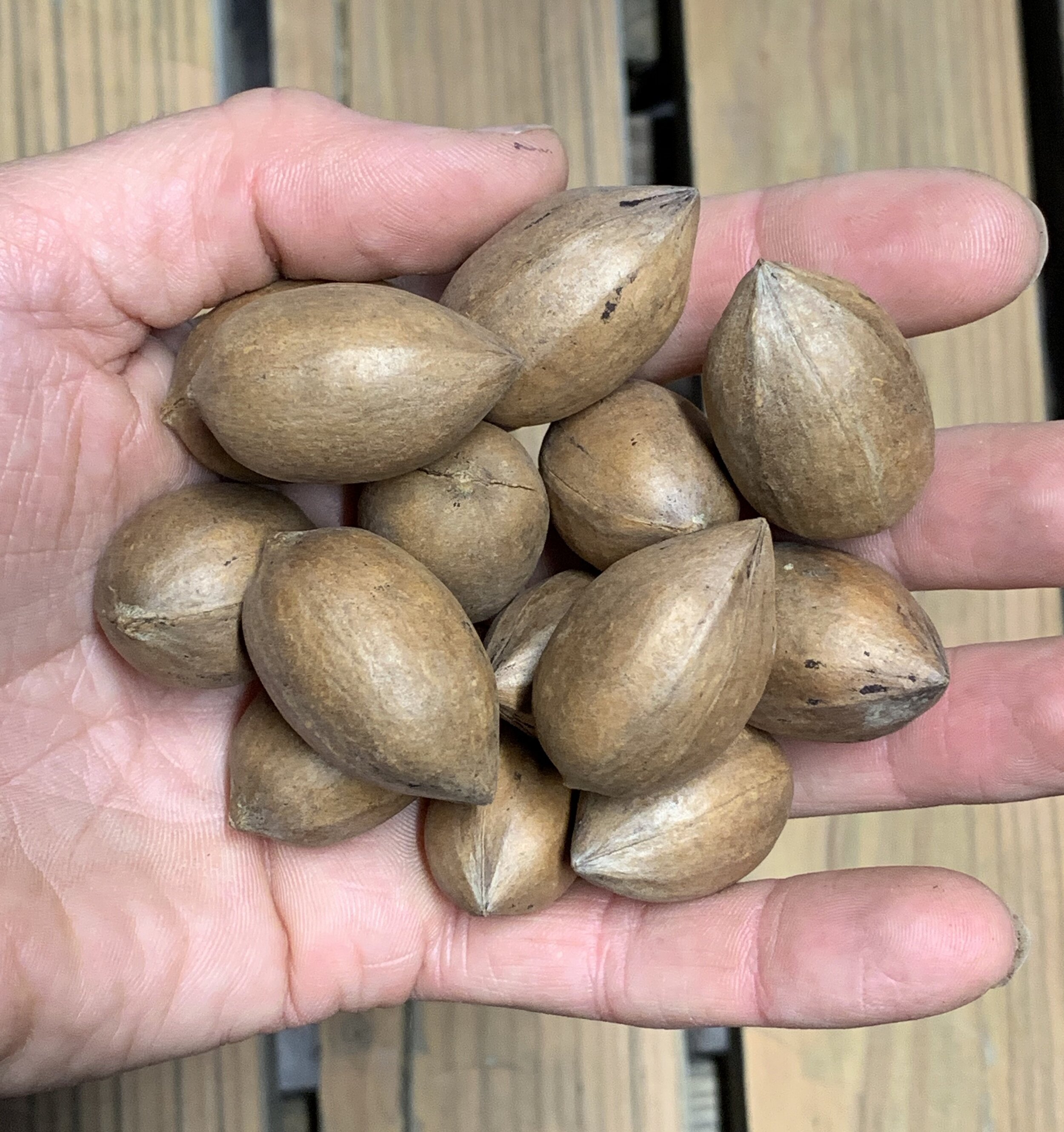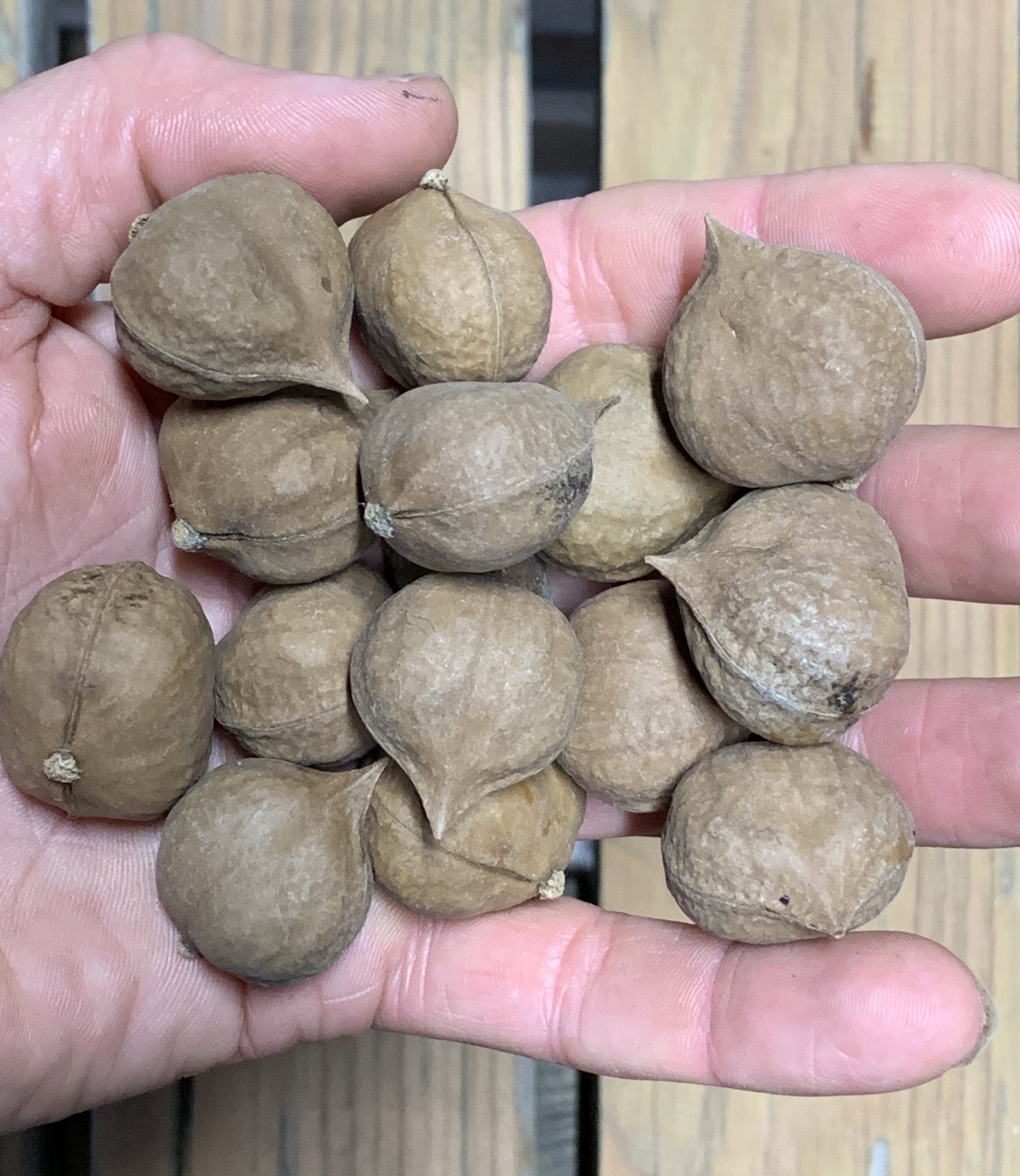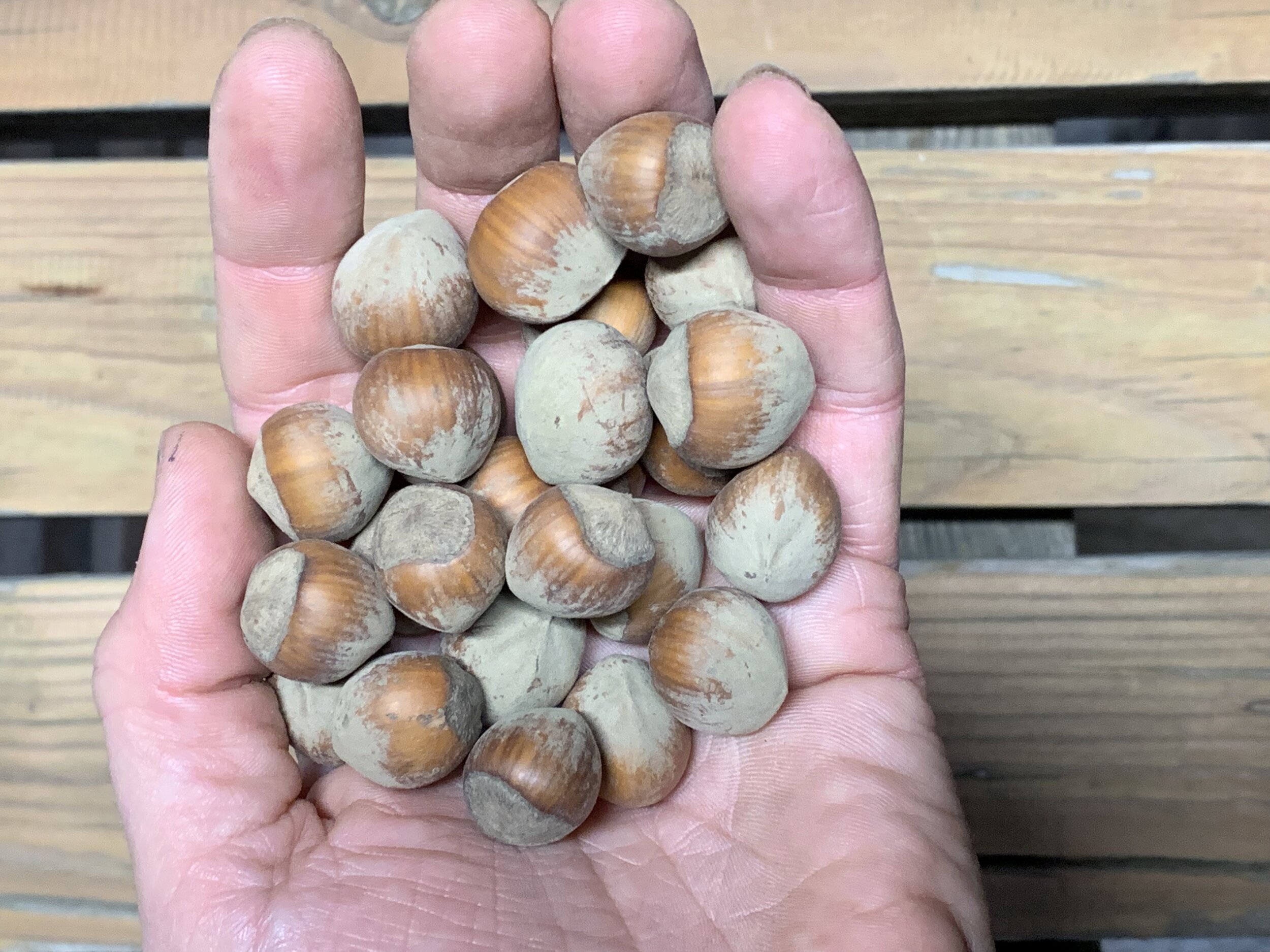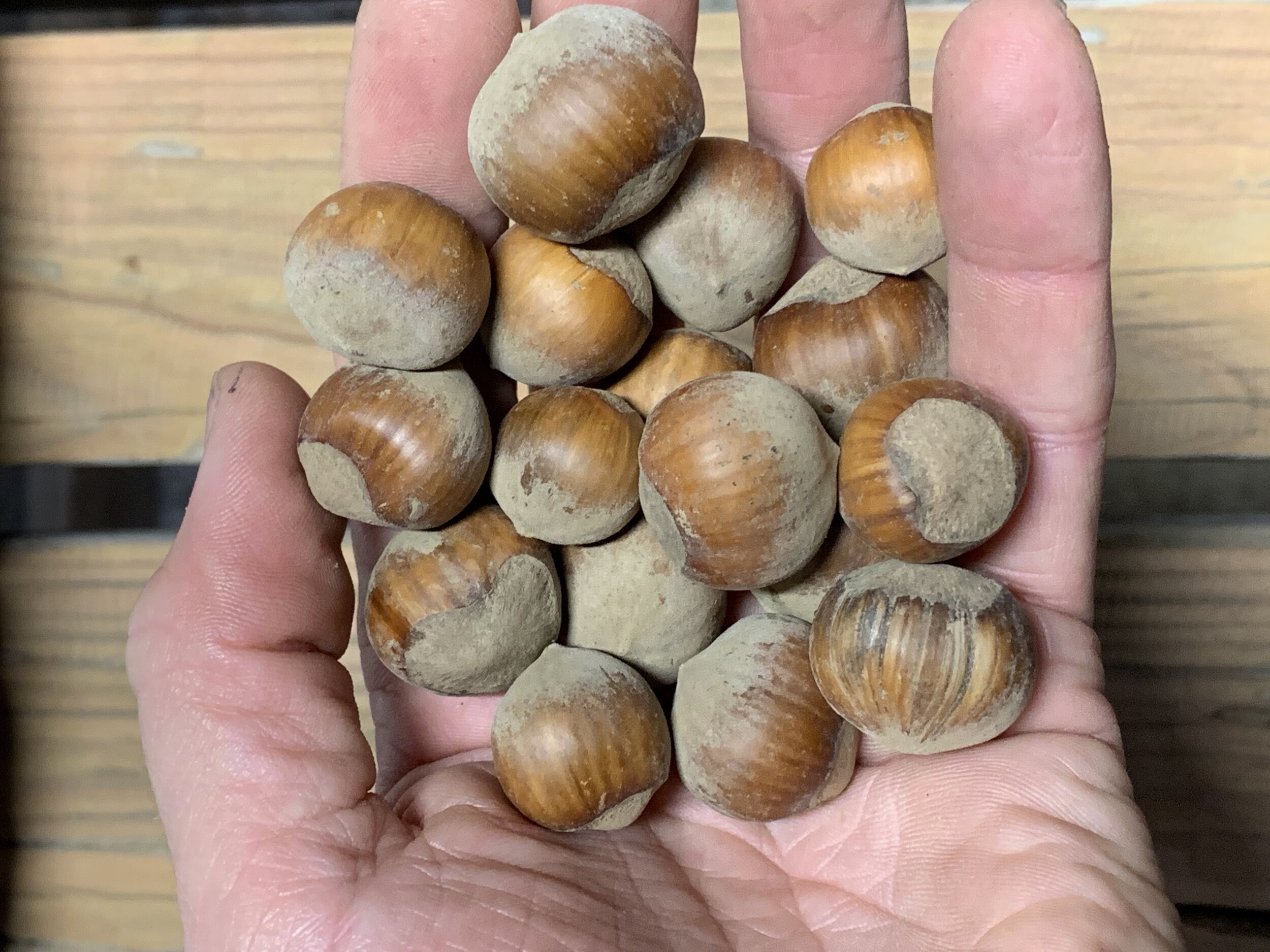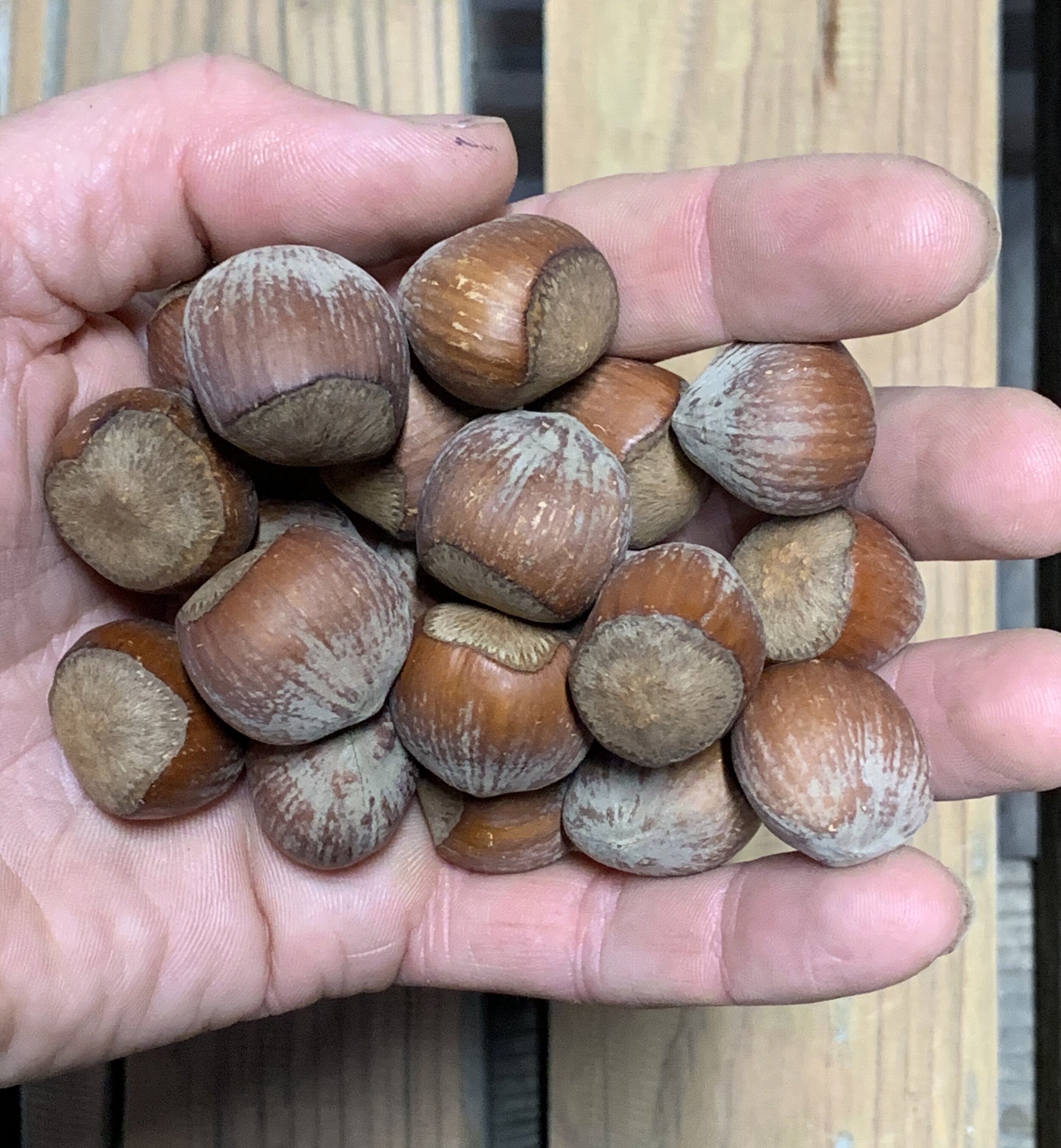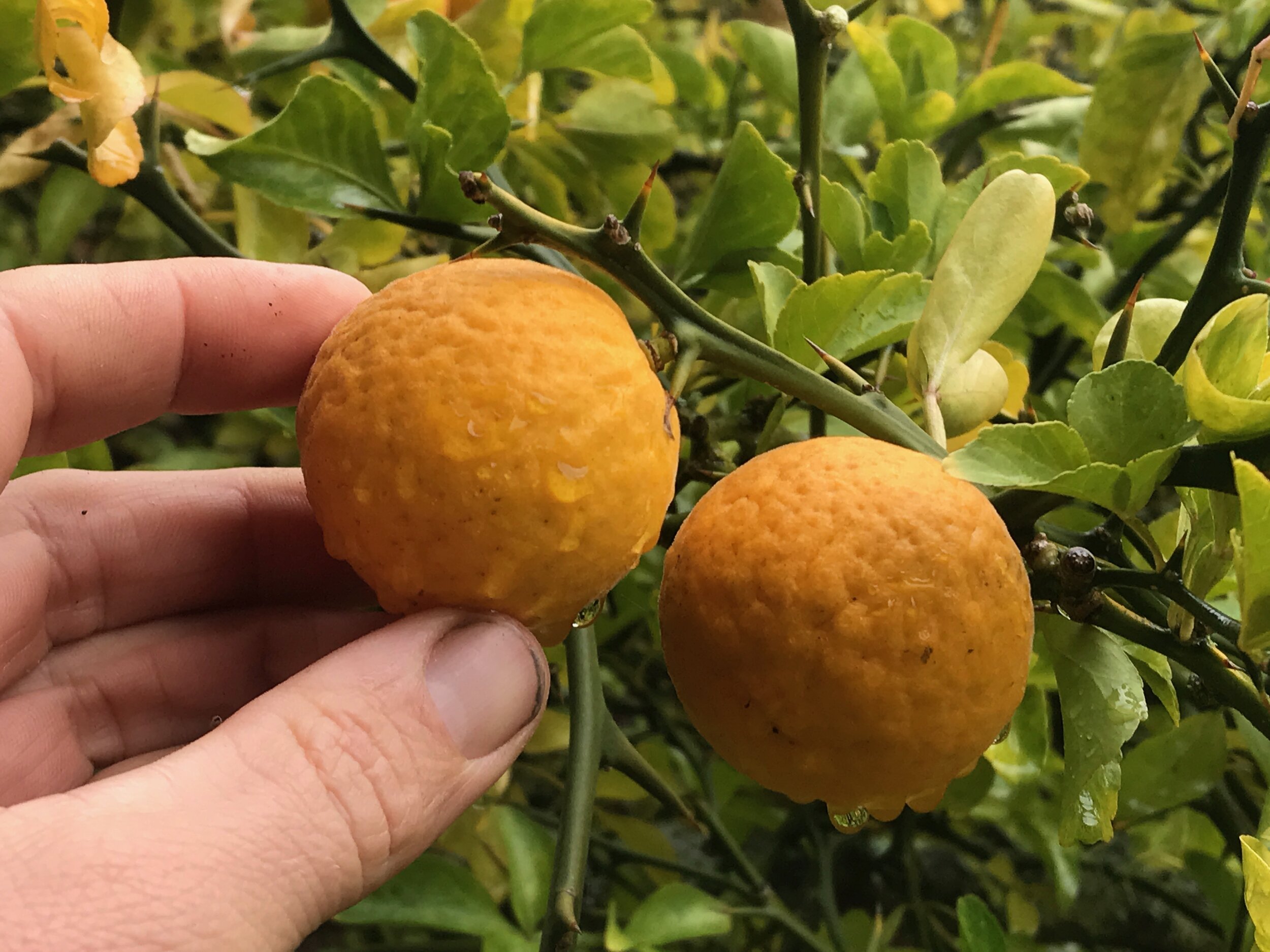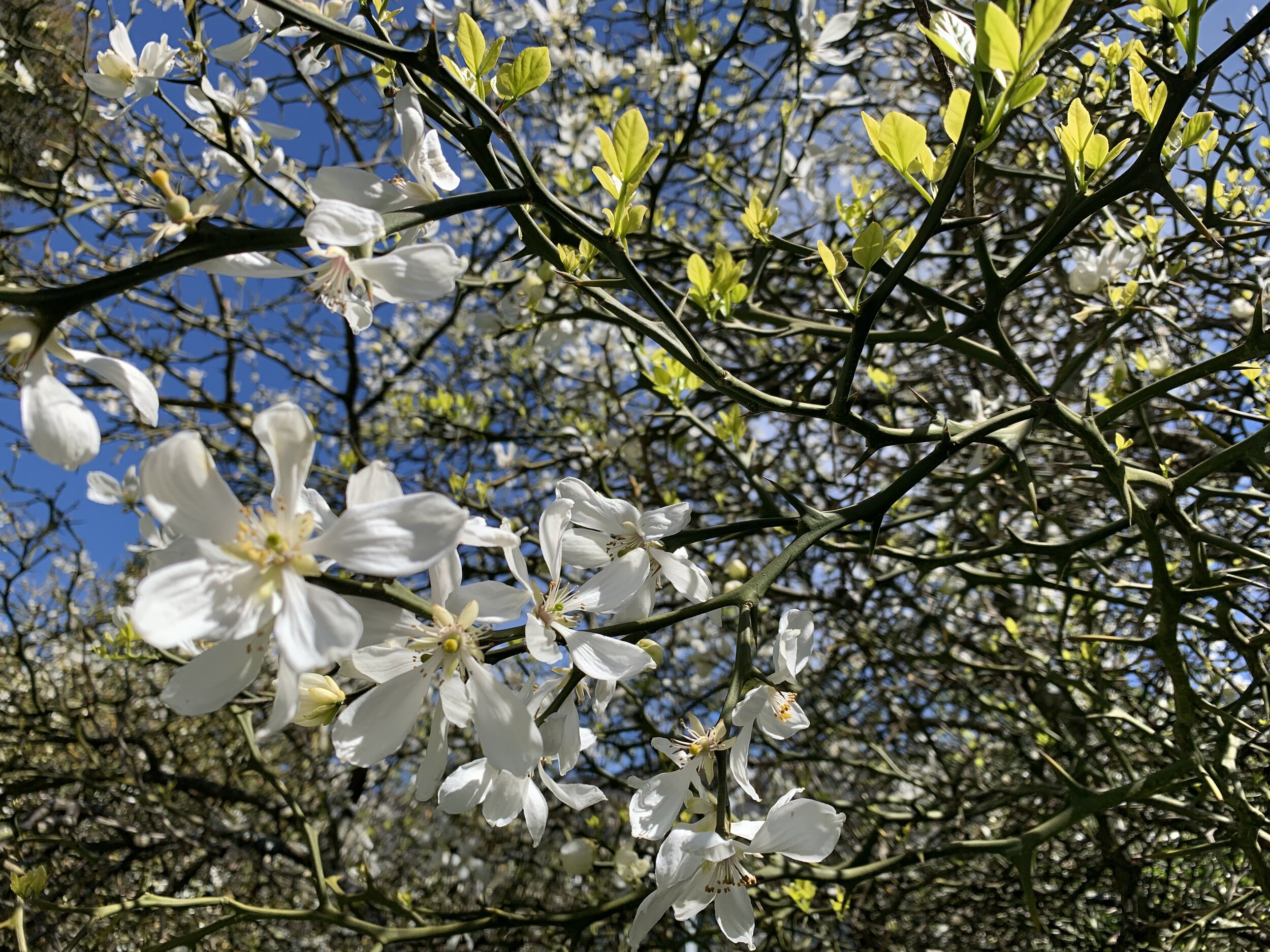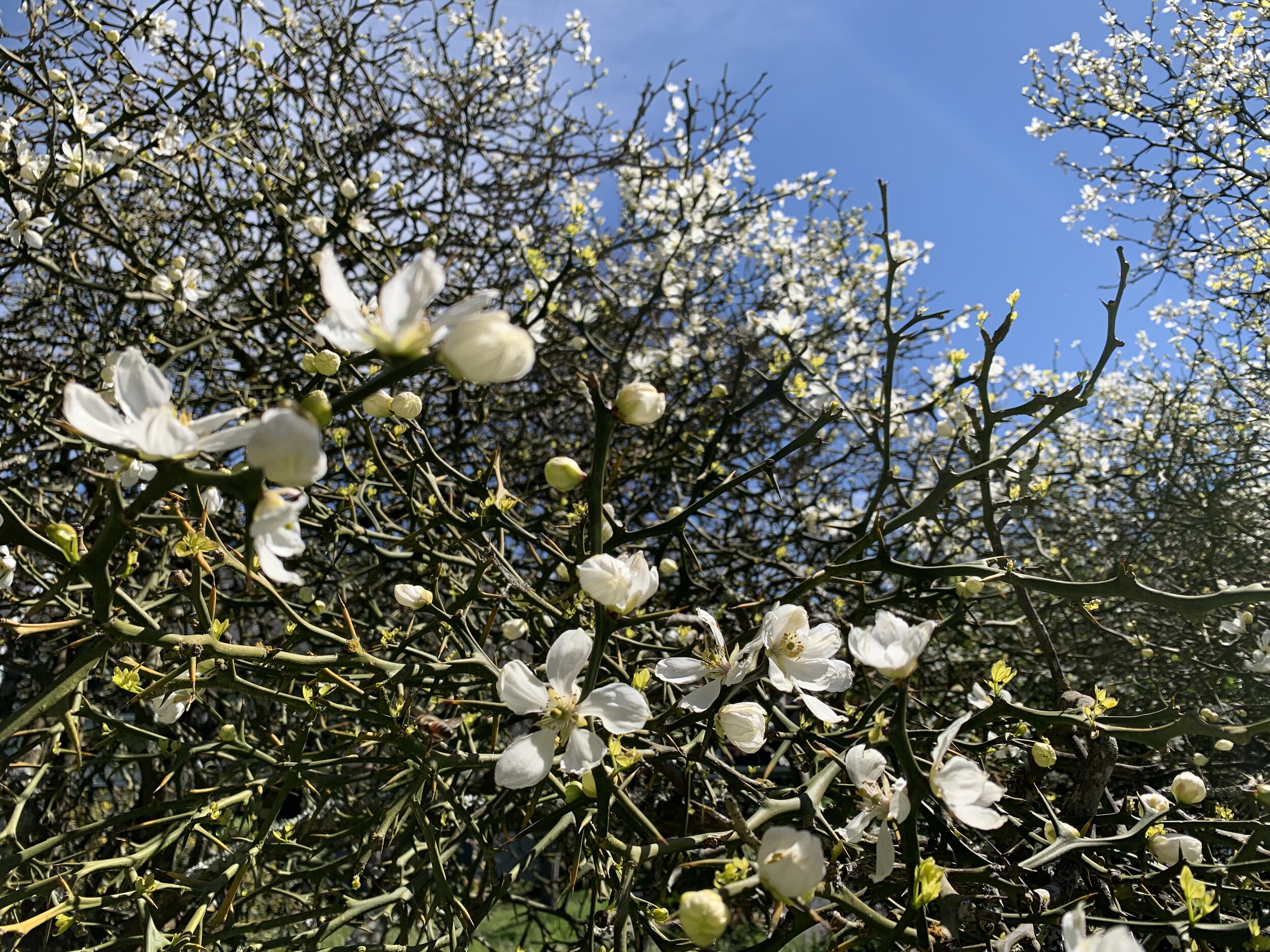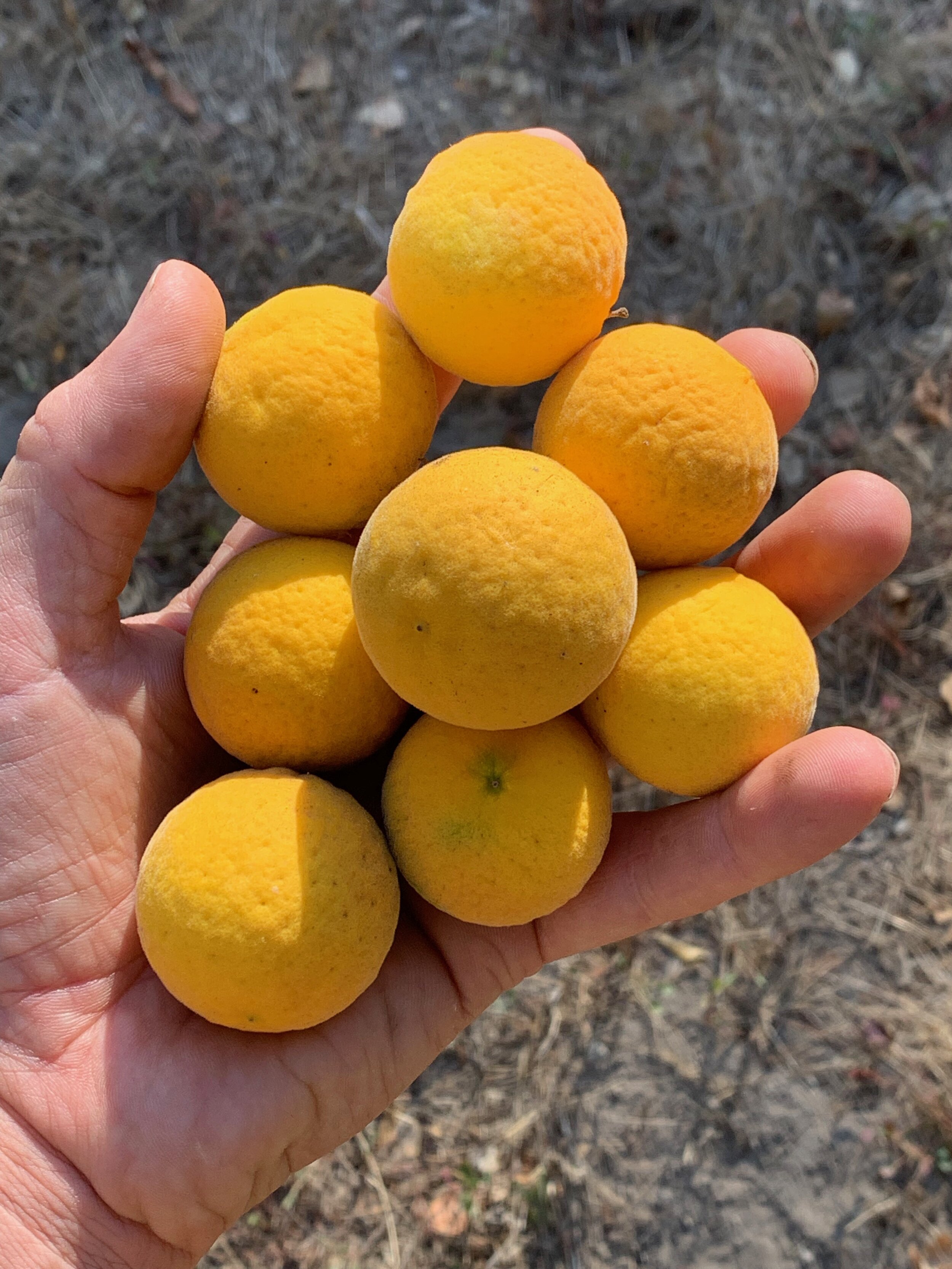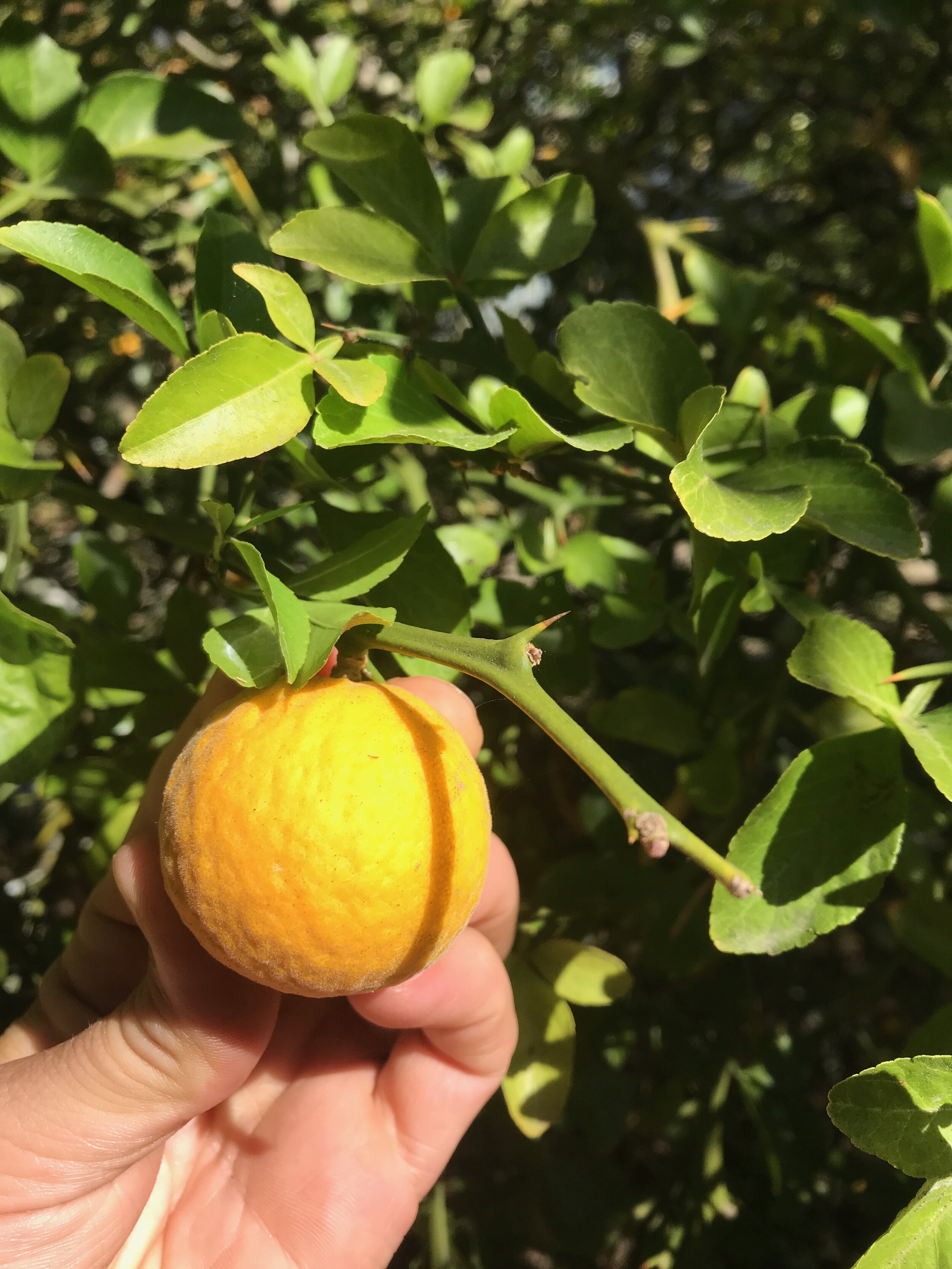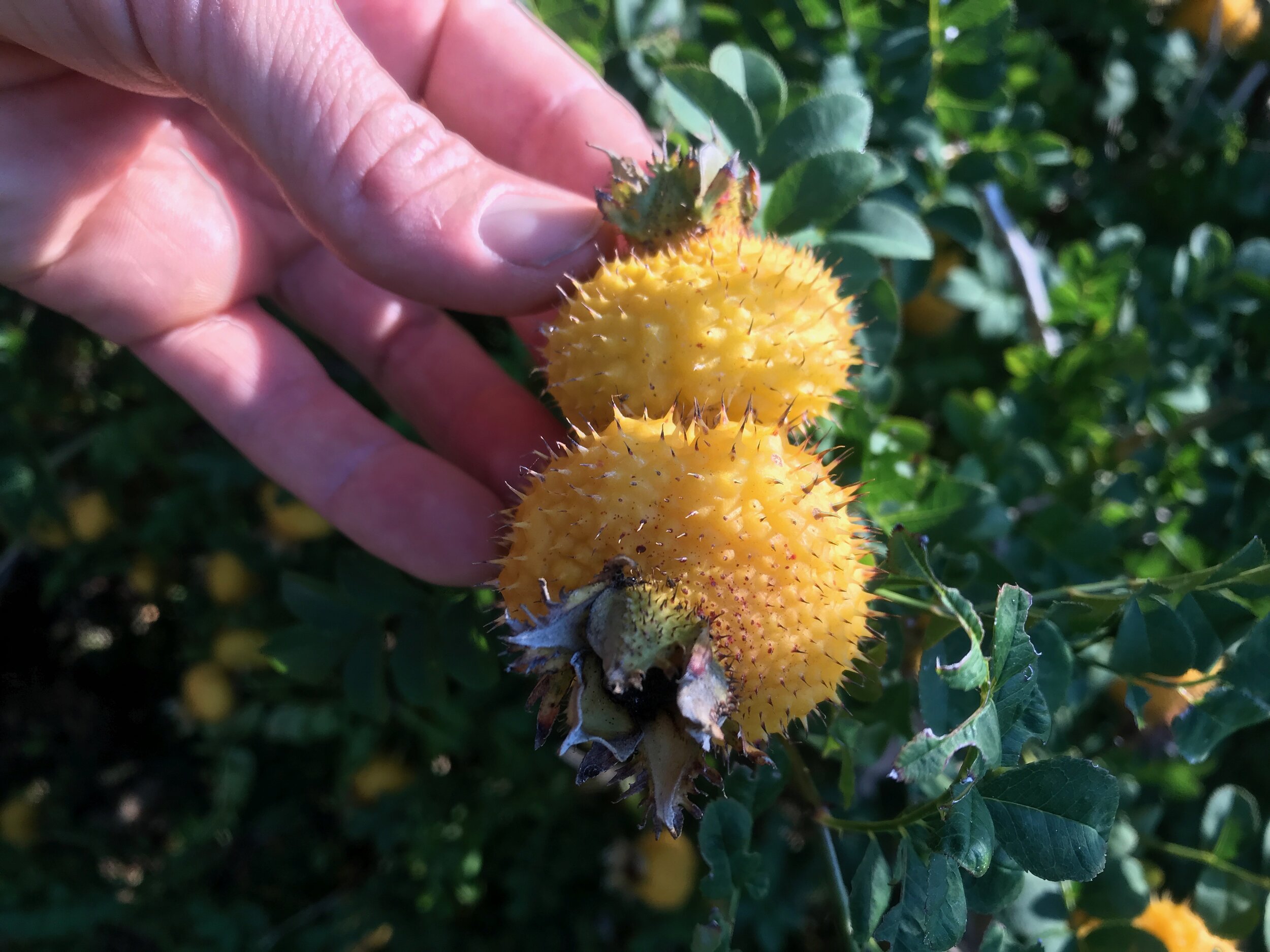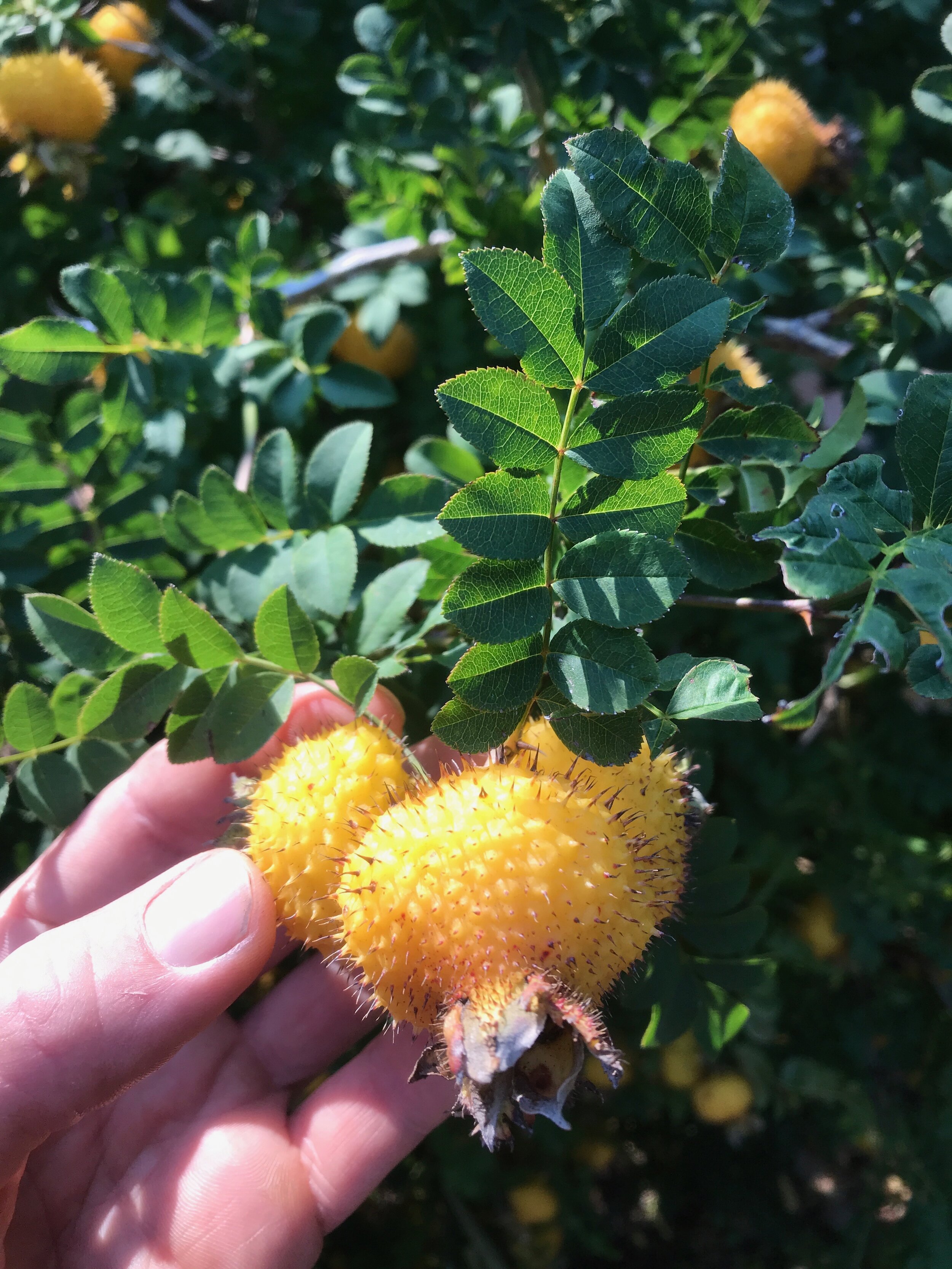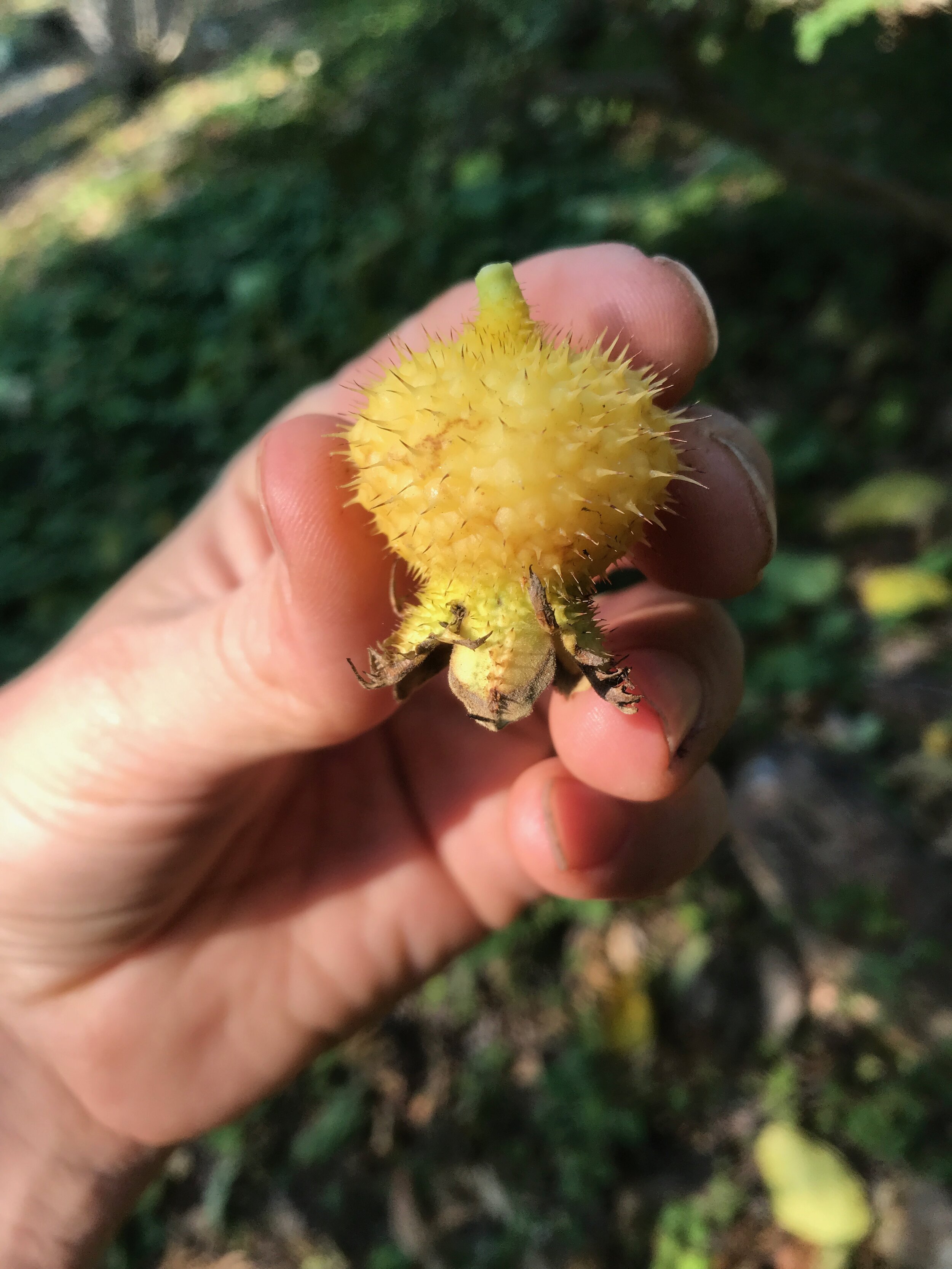Quercus macrocarpa hybrid
California Flannelbush - Freemontodendron californicum
Freemontodendron californicum, or California Flannelbush / Freemontia, is an ancient member of the Malvaceae family, which includes former Sterculiaceae and Bombacaceae.
Fremontia is something of a relic among California’s native species. It is a survivor from a period 60 million years ago when California was less mountainous and more tropical. Two other survivors from this same period include fan palms and ironwood trees, still found in desert climates. Freemontodendron can reportedly hybridize with Chiranthodendron pentadacylon, a fascinating tree from Mexico / Guatemala and the topic of past posts on this site.
Although its natural habitat is on rocky slopes of open chaparral or woodland between 1,200 and 6,500 feet of the coast ranges and Sierra Nevada, fremontia also does well in sunny, dry, almost sub-tropical gardens in Marin.
Freemontodendron californicum is traditional Native American medicinal plant, the inner bark's sap that was used as a topical remedy for mucous membrane irritation and for gastrointestinal upset. The wood was also used by the Californian Yokut and Kawaiisu peoples as a building and furniture material, and the bark for cordage and for nets used in acorn cache holding and snare hunting.
Don’t overwater. Excess summer water can kill this drought loving plant. A few deep waterings spaced evenly though the summer will be more then enough to establish the plant.
Redbud - Cercis occidentalis
Red bud blooming in end of February / early March of this year. Seeing the shock of pink from a distance I hiked up to check this one out. A truly spectacular spring blooming native shrub. The blooming plant is covered in numerous kinds of bees and insects.
Erythronium oregonum - California Fawn Lily
Erythronium californium is a herbaceous perennial bulb native to Northern California. I took these photos in Lake County where the highly scented flowers appear in full bloom at the end of February through March. numbering in the many thousands.
The bulbs, along with many other regional species, were an important food source for indigenous peoples. The bulb populations we see today are remnants of previously managed and far more extensive traditional food and land management systems.
The area depicted in these photos consists of semi-dense chaparral consisting primarily of Manzanita, Heteromeles, and Quercus (duration) along with Umbellaria californica, CThe Erythronium appears in profusion, as shown below, in the understory. The bulb seems to co-exist along side a healthy gopher population, which, reportedly, can aid in the dissemination of bulblets .
Other important genera of edible neophytes widely consumed in pre-contact California include Allium, Brodiaea, Camassia, Chlorogalum, Calochortus, Dichelostemma, Lilium, Lomatium, Perideridia, Sanicula, and Triteleia.
Aesculus California (Ca Buckeye) late winter bud
California Buckeye are one of the first deciduous trees to leaf out in late winter / early spring. This is a photo of a swollen bud, close to flushing out.
Aesculus California growing out of a rock outcrop - Lake County, CA
In its natural habitat in Aesculus California seems to like to germinate out of rock spills, often growing out of cracks and crevices. These are very resilient trees with beautiful branching structure, often among the first trees to leaf out in late winter and the first trees to loose their leaves in mid - late summer.
Chestnuts, hazelnuts and heart nuts....
Some examples of the numerous variations of chestnut and hazel nut I am propagating this year.
Trifoliate Orange - Poncirus trifoliata
Native to China and Korea, this is the most cold hardy
Trifoliate orange and various hybrids of this plant are widely used as citrus rootstocks. The plant is a fairly cold-hardy citrus (USDA zone 6) and will tolerate moderate frost and snow, making a large shrub or small tree 4–8 m tall. Because of its relative hardiness, citrus grafted onto Citrus trifoliata are usually hardier than when grown on their own roots.
Recent studies have revealed that the trifoliate orange contains aurapten at a high concentration, which is one of the functional components having immunity against citrus tristeza virus (CTV).
he fruits are very bitter, due in part to their poncirin content. Most people consider them inedible fresh, but they can be made into marmalade. When dried and powdered, they can be used as a condiment.
The fruits of the trifoliate orange are widely used in medical traditions of East Asia as a treatment for allergic inflammation.
Rosa roxburgii x gigantea - Cili fruit
Rosa roxburghii (Burr Rose or Chestnut Rose) is a species of rose originating in southwest China. It grows up to 5m high, with twisted stems and peeling grey-brown bark and large attractive flowers.
The flavor of cili fruit can be described as an astringent yet smooth, sweet and sour taste. The fruit extract is widely used as a natural medicine and wellness juice in parts of Asia. The ripe fruit is typically yellow, as depicted below, but some varieties remain greenish even when ripe.
The fruit is highly regarded for its medicinal and health benefits. The fruit is rich in ascorbic acid and vitamin E. Cili fruit extract contains high Superoxide Dismutase (SOD) activity, a strong antioxidant. Rosa roxburghii has been shown to have beneficial properties for NK cell activity, microcirculation, cognitive function, plasma antioxidant capacity, stress tolerance and immune function.
The seed of cili fruit is a good source of Vitamin E and can be ground into a powder and mixed with flour or added to other foods as a supplement. The natural fruit contains 2585mg of Vitamin C per 100g fruit, which is 1.5 times higher than Acerola, or 60 times more than orange.
The Amino Acids essential to the body in cili fruit extract inlcude: Aspargine, Serine, Valine, Histidine, Arginine, Tryptophane, Methionine, Methylamino, Glutamine, Proline, Glycine, Alanine, Tyrocine, Cystine,etc. Other trace elements include Calcium, Phosphorus, Iron, Magnesium, Copper, Magnesium Potassium and Natrium.
The shrub is fast growing from seed. A year old plant will be a two foot multi-stemmed shrub. I’m waiting to see how long they take to fruit from seed.

